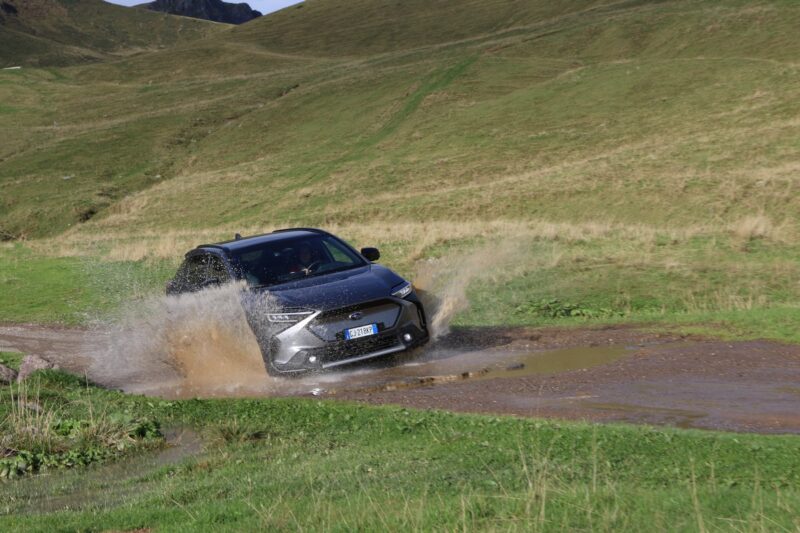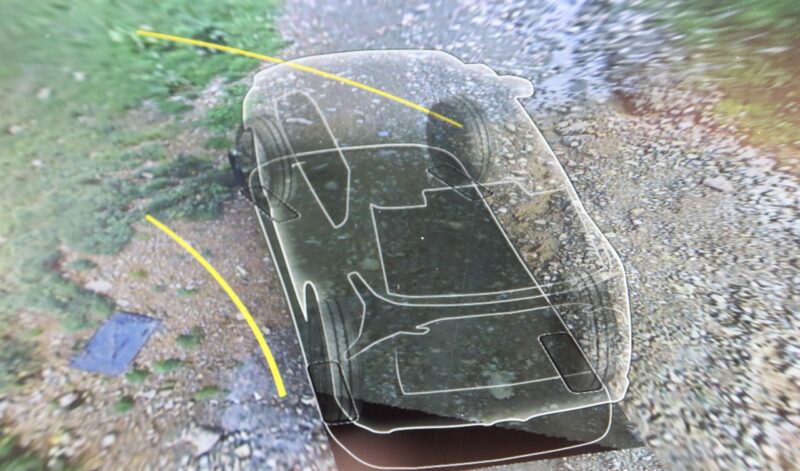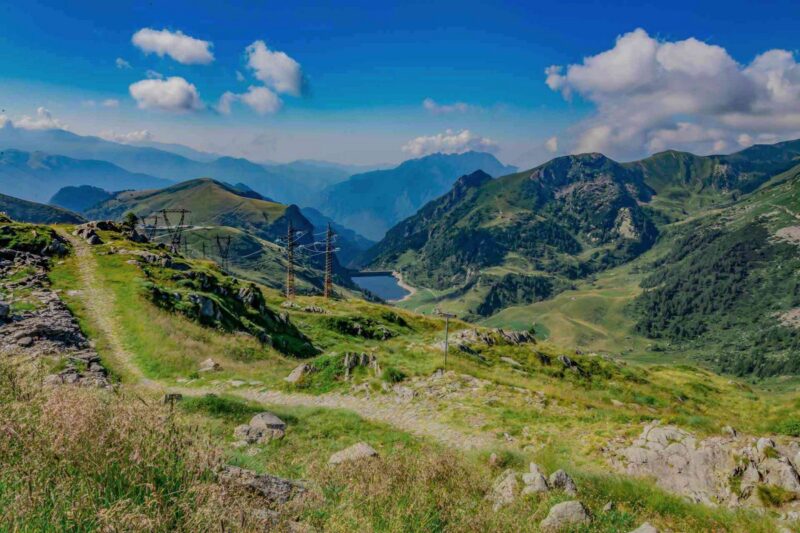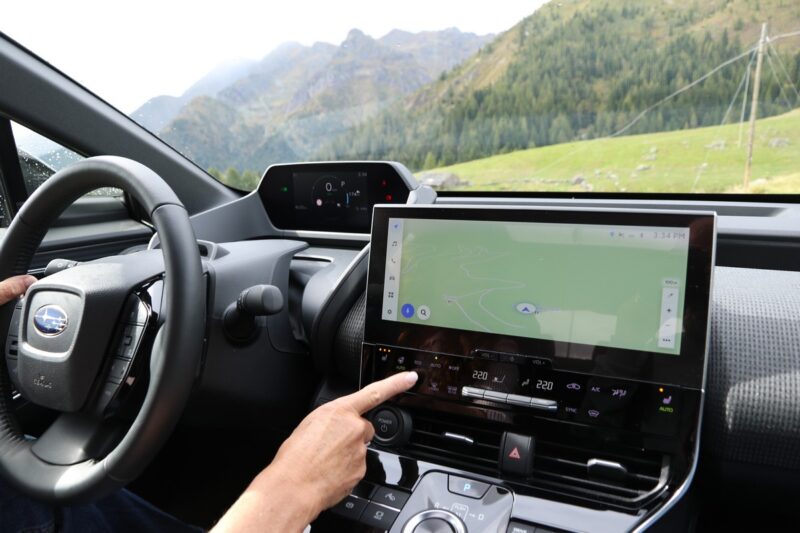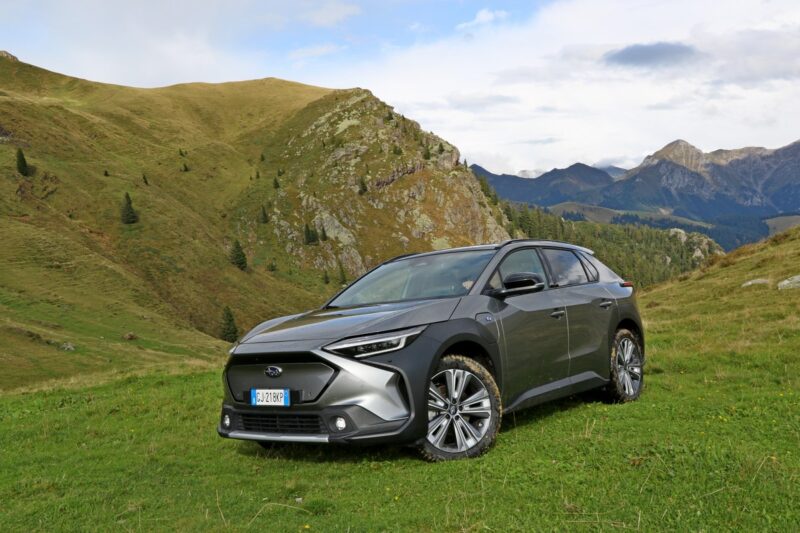Bucarest: storia, arte, gastronomia e…il gigante
 Testo e foto di Cesare Zucca —-
Testo e foto di Cesare Zucca —-
( italian version followed by english version)
Benvenuti a Bucarest, Romania.
Città di contrasti, atmosfere eclettiche e una delle capitali più autentiche d’Europa. Avventuratevi nel centro storico, un mix di storia, cultura locale e stile di vita, un quartiere di intrattenimento alla moda per turisti e gente del posto. Molti degli edifici situati nel centro storico hanno terrazze al piano terra, caffè, ristoranti e negozi. Scoprite fontane spettacolari, infatti Bucarest, grazie alle sue 44 fontane infatte detiene il Guinness dei primati per il sistema di fontane coreografate più lungo del mondo.
Scoprite fontane spettacolari, infatti Bucarest, grazie alle sue 44 fontane infatte detiene il Guinness dei primati per il sistema di fontane coreografate più lungo del mondo.  Bucarest conta circa 60 musei tra antichi e rinnovati.
Bucarest conta circa 60 musei tra antichi e rinnovati.
Tra i più famosi:
L’Ateneo Rumeno
Visitato da re e regine, politici e ospiti illustri provenienti da tutto il mondo. Suggestivo ingresso con marmi, colonne, scale circolari e un imponente scalone di accesso alla sale dei concerti, sovrastata da una maestosa cupola.
La costruzione, in stile neoclassico è tuttora la sede dell’Orchestra Filarmonica George Enescu che, oltre agli attuali concerti sinfonici e da camera (circa 300 all’anno) ha effettuato numerose tournée in Europa, Asia ed Estremo Oriente, guadagnandosi una meritata reputazione internazionale.
Museo Nazionale di Storia Naturale “Grigore Antipa” istituito nel 1834. Ospitava uccelli, mammiferi, molluschi, pesci, fossili di vario tipo, diversi minerali e monete appartenenti al popolo greco. Nel 2009, il museo Antipa ha subito un impressionante ammodernamento, diventando così uno dei musei più ricercati della città.
Museo Nazionale del Villaggio “Dimitrie Gusti”
Un tuffo nel tempo, alla scopert di un vero villaggio che racconta la storia del contadino rumeno. Troverete, case ed edifici rurali rappresentativi di ogni area etnografica del Paese, comprese quelle della Transilvania, Maramures, Oltenia, Moldavia, Dobrogea, Muntenia e Banato. Davvero suggestivo! Museo Militare Nazionale
Museo Militare Nazionale
Ospita tre grandi mostre: Storia Antica, Machete (dedicata alle tecniche militari e la Collezione di armi bianche e da fuoco. Nel cortile troneggia il Monumento agli Eroi del 21° Reggimento di Fanteria, scolpito dal grande artista Spiridon Georgescu-Roegen.
Museo della Città di Bucarest
Dedicato alla conservazione e alla promozione del patrimonio storico e culturale della città, offre ai visitatori uno sguardo accattivante sulla storia e sull’evoluzione di Bucarest
Museo Nazionale di Storia della Romania
8.000 metri quadrati e 60 sale che illustrano millenni di storia,dalle testimonianze sulla presenza dell’uomo Paleolitico (600.000 anni – 6.000 anni a.C.), la cultura materiale e spirituale dei Geto-Daci, le guerre Daco-Romane .fino alla rivoluzione democratico-borghese del 1848, l’indipendenza, lo scoppio delle due guerre mondiali e l’ingresso della Romania sotto l’influenza russa.
Museo Nazionale d’Arte
Amate le belle arti ? Nei pressi dell’Ateneo scoprirete una collezione che spazia dall’arte antica rumena all’ arte moderna rumena quella europea, Tra gli artisti più importanti che hanno esposto le loro opere in questo museo ci sono Brancusi, Rembrandt, Monet, Rubens e Tintoretto. Monastero Stavropoleos
Monastero Stavropoleos
Tempio ortodosso in pieno centro città, Costruito nel 1724 e luogo di preghiera e devozione E’ considerato un capolavoro dell’architettura rumena in stile Brâncoveanu.  Arricchito da splendide decorazioni di ghirlande e pizzo scolpite nella pietra e da motivi floreali sulla facciata, sulle finestre E nel portico marmoreo.
Arricchito da splendide decorazioni di ghirlande e pizzo scolpite nella pietra e da motivi floreali sulla facciata, sulle finestre E nel portico marmoreo. la magnifica iconostasi in legno finemente intagliato chiude l’abside del fondo e che, insieme agli eleganti e numerosi elementi decorativi della chiesa, forma un vero e proprio gioiello dell’arte sacra e bizantina.
la magnifica iconostasi in legno finemente intagliato chiude l’abside del fondo e che, insieme agli eleganti e numerosi elementi decorativi della chiesa, forma un vero e proprio gioiello dell’arte sacra e bizantina. Mercato delle pulci
Mercato delle pulci
Amanti dell’antiquariato, collezionisti, cacciatori di vintage o semplicemente in cerca di un buon affare? Nella zona di Timisoara Boulevard. Vi aspetta un vero bazaar dei ricordi, spazio aperto dedicato a oggetti vintage.  Troverete di tutto: dipinti, lampade, manufatti, vestiti di ogni tipo, orologi, ceramica e bronzo, distintivi da collezione, giocattoli, libri, vinili e molte altre gemme. Prezzi minimi. Aperto tutti i giorni, dalla mattina alle 14.Buona caccia!
Troverete di tutto: dipinti, lampade, manufatti, vestiti di ogni tipo, orologi, ceramica e bronzo, distintivi da collezione, giocattoli, libri, vinili e molte altre gemme. Prezzi minimi. Aperto tutti i giorni, dalla mattina alle 14.Buona caccia!
 Relax e green
Relax e green
Meta consigliata. le Terme di Bucarest. 2° centro benessere, relax e divertimento più grande d’Europa. L’acqua termale scorre dalle profondità del sottosuolo e alimenta 6 saune, 4 saune umide e 16 spettacolari scivoli acquatici. 10 piscine di cui una relax con selenio e zinco.  Le Terme ospitano inoltre la più ampia varietà di piante botaniche con oltre 800.000 piante, innumerevoli orchidee, 1500 palme provenienti da 6 paesia. Aperto dalle 10.00-23.00
Le Terme ospitano inoltre la più ampia varietà di piante botaniche con oltre 800.000 piante, innumerevoli orchidee, 1500 palme provenienti da 6 paesia. Aperto dalle 10.00-23.00 Osservatorio Astronomico
Osservatorio Astronomico
Nato nel 1908 e dotato di un telescopio MEADE LX200R di 30 cm di diametro e di uno sniper che consente l’osservazione del Sole e le eruzioni solari in un’altra lunghezza d’onda.
Arco di Trionfo
Colossale costruzione situata nella parte settentrionale di Bucarest, tra i monumenti che commemorano la partecipazione della Romania alla prima guerra mondiale. Selfie d’obbligo! E finalmente… il gigante!
E finalmente… il gigante!
Palazzo del Parlamento, simbolo della città e uno degli obiettivi turistici più visitati
Edificio imponente, architettura monumentale e dimensioni massicce.
E’ cosiderato l’edificio amministrativo più costoso, più pesante e più grande al mondo, secondo solo dal Pentagono. Con circa 1000 stanze di cui 440 uffici, 30 sale da ballo, grande sala concerti. ristoranti, biblioteche, parcheggi.
Pensate, praticamente non è ancora completato… ospita infatti una piscina incompiuta e migliaia di metri quadrati in cui nessuno sa cosa stia succedendo.
Gli interni rivelano mobili in legno massiccio, enormi lampadari di cristallo, possenti colonne di marmo e ad altri elementi di interior design scelti con cura per ogni stanza, Perfino le fnestre sono da Buinness…. le loro tende sono le più alte del mondo Il loro peso supera i 250 kg ciascuno! Perdetevi nei labirinti delle immense sale..
Perdetevi nei labirinti delle immense sale..
Sala Ionescu con ornamenti sul soffitto ricoperti di foglia d’oro. L’acustica è davvero speciale tale da molteplicare gli applausi che accoglievano il Capo di Stato Nicolae Ceausescu. L’eco rendeva gli applausi più forti, l’effetto sarebbe diventato di grande impatto. Sala dei Diritti Umani, una delle più maestose, al centro un’enorme tavola rotonda, 60 sedie identiche per i membri del Comitato politico esecutivo (la poltrona di Nicolae Ceaușescu non fu mai terminata… come molte altre cose che vi svelerò più avanti…)
Sala dei Diritti Umani, una delle più maestose, al centro un’enorme tavola rotonda, 60 sedie identiche per i membri del Comitato politico esecutivo (la poltrona di Nicolae Ceaușescu non fu mai terminata… come molte altre cose che vi svelerò più avanti…)  Sala dell’Unione, la più grande: 2200 mq. Il tappeto misura 1100 mq e pesa 3 tonnellate e fu tessuto direttamente all’interno della stanza, essendo troppo grande per essere trasportato.
Sala dell’Unione, la più grande: 2200 mq. Il tappeto misura 1100 mq e pesa 3 tonnellate e fu tessuto direttamente all’interno della stanza, essendo troppo grande per essere trasportato.
Sala Alexandru Ioan Cuza, famosa per il suo balcone che si affaccia su Unirii Boulevard. L’unica persona che salutò la folla da questo balcone fu Michael Jackson nel 1992. Si rivolse ai suoi fan con un “Ciao, Budapest!” invece di “Ciao Bucarest!”. Vabbè, perdonato…. LA GASTRONOMIA DI BUCAREST
LA GASTRONOMIA DI BUCAREST
La Romania ha un inverno rigido, le pietanze sono robuste, sostanziose e per niente dietetiche. I piatti tipici di Bucarest sono pricipalmente a base di carne , polenta, patate e verdure in salamoia, ma non mancano il pesce di acqua dolce, i formaggi e fagioli. Nei mesi più freddi la regina della tavola è chorba, cioè zuppa, che può essere preparate con verdure, legumi, pollo, manzo, maiale e, obbligatoriamente, con panna acida. Buonissima la ciorba de fasole cu afumatura cioè la zuppa di fagioli e costine di maiale affumicato. La mia preferita? Ciorba de burta alla trippa, saporita, cremosa, con gradevoli note acide di peperoni sott’aceto.
Nei mesi più freddi la regina della tavola è chorba, cioè zuppa, che può essere preparate con verdure, legumi, pollo, manzo, maiale e, obbligatoriamente, con panna acida. Buonissima la ciorba de fasole cu afumatura cioè la zuppa di fagioli e costine di maiale affumicato. La mia preferita? Ciorba de burta alla trippa, saporita, cremosa, con gradevoli note acide di peperoni sott’aceto. Sarmale
Sarmale
Protagonista indiscusso della tavola rumena, è un mix di carne macinata, riso, verdure e spezie. Viene servito bollito, avvolto in una foglia di verza o di vite abbinato con la polenta.
Tochitura
Stomaco di ferro? Ordinate questo piatto e scordatevi di diete e calorie.
Stufato di maiale, pancetta e salsiccia, cucinato lentamente nello strutto. Come se non bastasse viene accompagnato da uovo fritto, formaggio, sottaceti e mamaliguta cioè l’equivalente della nostra polenta, spesso arricchita da formaggio di pecora o bacon affumicato. SNACK
SNACK
Se siete in vena di uno snack, tipico rifugiatevi in un bar papanasi, dove troverete tutte le specilità rumene e spesso la birra da ordinare ” a metro” servita su lunghi vassoi, più centimetri desiderate, più birre arrivano… Per un tipico snack on the road, addocchiate una bancarella che serve merdenea cu branza una sfogliatella millefoglie al formaggio.
Per un tipico snack on the road, addocchiate una bancarella che serve merdenea cu branza una sfogliatella millefoglie al formaggio.  Impossibile non lasciarsi tentare dai pufuleti, biscottini biricchini e salati… ideali con il drink dissetamte più popolare di Bucarest: la superba limonata con limone, menta, mela, miele.
Impossibile non lasciarsi tentare dai pufuleti, biscottini biricchini e salati… ideali con il drink dissetamte più popolare di Bucarest: la superba limonata con limone, menta, mela, miele. DOVE MANGIARE
DOVE MANGIARE
The Grill “Meet and Meat” è lo slogan del ristorante voluto da Demi e Dani, che hanno combinato l’esperienza gastronomica al know-how nella comunicazione, con il proposito di far connettere buon cibo a persone fantastiche. The Grill si avvale dei migliori fornitori di pesce (salmone, pesce persico, orata)e di carne (pollo. maiale, gallo cedrone, salsicce di Black Angus, manzo stagionato con l’osso) il tutto preparato sulla griglia a carbone.
The Grill si avvale dei migliori fornitori di pesce (salmone, pesce persico, orata)e di carne (pollo. maiale, gallo cedrone, salsicce di Black Angus, manzo stagionato con l’osso) il tutto preparato sulla griglia a carbone. Dopo tanta carne, la voglia di un buon piatto di pesce è inevitabile. Il posto giusto?
Dopo tanta carne, la voglia di un buon piatto di pesce è inevitabile. Il posto giusto?
Ivan Pescar, dove ho sperimentato icre de stiuca. uova di luccio al naturale servite con pane abbrustolito e storceag, deliziosa zuppa di storione con cipolle, carote, peperoni, sedano, uova, panna, scorza di limone, prezzemolo, servita con peperoncino e limone. 
Anche la trota è un pesce molto amato e utilizzato in cucina. La versione più richiesta però è păstrăv la gratar cu cartofi cucinata alla griglia e servita con patate al forno. Per chiudere in dolcezza, un morbidissimo dolce alla zucca, ingrediente che non delude mai… (come il mio cognome…LOL)
Per chiudere in dolcezza, un morbidissimo dolce alla zucca, ingrediente che non delude mai… (come il mio cognome…LOL) Se cercate un piacevole dehors piacevole e se gradite un servizio ben fatto, considerate il menu di La Mama, che propone specialità rumene tra cui goulash stile Transilvania con carne di vitello, peperoni, cipolle, pomodoro e vino e le tradizionali zuppe di trippa e di costine di maiale .
Se cercate un piacevole dehors piacevole e se gradite un servizio ben fatto, considerate il menu di La Mama, che propone specialità rumene tra cui goulash stile Transilvania con carne di vitello, peperoni, cipolle, pomodoro e vino e le tradizionali zuppe di trippa e di costine di maiale . Per una cena decisamente gourmet per conoscere la “new Romanian cuisine” l’indirizzo giusto è KANE’ guidato dall’eccellente Chef Cătălin Bejenariu.
Per una cena decisamente gourmet per conoscere la “new Romanian cuisine” l’indirizzo giusto è KANE’ guidato dall’eccellente Chef Cătălin Bejenariu.
ll ristorante si trova in un edificio del 1910 che conserva una grande memoria della cultura e della storia rumena. Due saloni: il Salone Blu, definito dal blu Voroneț, la cui composizione cromatica rimane un mistero anche oggi e il Salone Nero, con elementi tradizionali rumeni. Per una serata davvero “privè” ecco Chef’s Table, un’ esperienza unica, che ho avuto la fortuna di vivere. Cenerete in una piccola area privata per massimo 4 persone, con vista diretta sulla cucina e sulle manovre culinarie di Bejenariu e il suo team.
Per una serata davvero “privè” ecco Chef’s Table, un’ esperienza unica, che ho avuto la fortuna di vivere. Cenerete in una piccola area privata per massimo 4 persone, con vista diretta sulla cucina e sulle manovre culinarie di Bejenariu e il suo team. L’esperienza Chef’s Table, può essere prenotata tramite hello@kane-restaurant.com
L’esperienza Chef’s Table, può essere prenotata tramite hello@kane-restaurant.com KANE’ oggi detiene il futuro della gastronomia rumena, utilizzando ingredienti locali e semplici, riproposti e reimmaginati da Chef Cătălin e dal suo team attraverso due tasting menu di 10 o 13 portate.
KANE’ oggi detiene il futuro della gastronomia rumena, utilizzando ingredienti locali e semplici, riproposti e reimmaginati da Chef Cătălin e dal suo team attraverso due tasting menu di 10 o 13 portate. Proprio dalla mia postazione, a tu per tu con la cucina, ho intervistato lo Chef
Proprio dalla mia postazione, a tu per tu con la cucina, ho intervistato lo Chef
Ciao Cătălin, vedo un insolito menu verticale con gli schizzi dei piatti...
Detesto i menu con le foto dei piatti , ma mi sono divertito a disegnarli formando un vero e proprio percorso, come il nostro “tasting menu” che può essere di 10 o 13 portate.
Sono bellissimi! Rispecchiano la tradizionale cucina rumena?
No, sono definitivamente una mia visione. Un desiderio di sperimentare.
Kané, vuole essere l’illustrazione della creatività della cucina rumena, proponendo la visione della nuova generazione culinaria della nostra gastronomia.
Un desiderio di sperimentazione che ti accompagna da tanto?
Si, ricordo che fin da bambino, provavo accoppiamenti insoliti, come come mettere dello zucchero sulle verdure
E i risultati?
(ride) Beh, spesso il risultato non era un gran chè, ma la voglia di sperimentare mi è rimasta… con esiti decisamente migliori…
Sperimenti anche quando cucini a casa?
No, lì vado sul classico: piatti che piacciono alla mia famiglia e ai miei 2 bambini , come la nostra zuppa prefeita,con polpettine di carne e sour cream.
E la famosa zuppa di trippa?
Non mi è mai piaciuta, ricordo che fin da pIccolo vedere tutto quel grasso in pentola mi traumatizzava..
3 parole per descrivere la tua cucina?
Disciplina, bell’aspetto e gusto
Vorrei aggiungere l’arte di maneggiare ingredienti semplici, dal sedano alla barbabietola e mostrarla in un’estetica accurata dominata dalla monocromia.

Ricette difficili da realizzare e impossibili da replicare?
E’possibile copiare una ricetta, ma mai l’emozione, l’importante è metterci dentro il cuore, immaginazione e piacere.  Quando ero piccolo io e gli amici mangiavano pane, acqua e zucchero. per noi era il miglior dessert al mondo…
Quando ero piccolo io e gli amici mangiavano pane, acqua e zucchero. per noi era il miglior dessert al mondo… DOVE DORMIRE
DOVE DORMIRE
Suter Palace, boutique hotel cinque stelle, situato in un antico palazzo. 
Le sontuose camere con pannelli in legno sono vestite con biancheria lussuosa in una tavolozza regale, in linea con il patrimonio della struttura che fa parte delle residenze storiche di Bucarest. 
 Enormi scalinate, ampie camere, alcune con un secondo spazio sopraelevato, uno spettacolare candeliere, si dice il più lungo d’Europa. Ottimo breakfast e piacevole reception. raffinato ristorante una rilassante terrazza panoramica, con vista mozzafiato sulla città. Mi è stato sussurrato che il Suter sia l’hotel preferito da Beyoncè…
Enormi scalinate, ampie camere, alcune con un secondo spazio sopraelevato, uno spettacolare candeliere, si dice il più lungo d’Europa. Ottimo breakfast e piacevole reception. raffinato ristorante una rilassante terrazza panoramica, con vista mozzafiato sulla città. Mi è stato sussurrato che il Suter sia l’hotel preferito da Beyoncè… Volevo sottolineare che questa esperienza è stata per me (e presumo sarà anche per voi) la piacevole scoperta della gente rumena, seria, affabile e accogliente, al contrario di quanto purtroppo riscontriamo in alcuni rumeni che migrano in Italia e in tutto il resto dell’Europa e del mondo, i quali, spesso costretti dalla mancanza di lavoro, si rivelano all’estero come individui inaffidabili e pericolosi. Nel mio viaggio ho trovato persone tranquille, seri lavoratori coinvolti nel lavoro agricolo stagionale, nel commercio di automobili, nell’abbattimento di alberi e nell’arte dell’ospitalità, oltre che eccellenti cuochi.
Volevo sottolineare che questa esperienza è stata per me (e presumo sarà anche per voi) la piacevole scoperta della gente rumena, seria, affabile e accogliente, al contrario di quanto purtroppo riscontriamo in alcuni rumeni che migrano in Italia e in tutto il resto dell’Europa e del mondo, i quali, spesso costretti dalla mancanza di lavoro, si rivelano all’estero come individui inaffidabili e pericolosi. Nel mio viaggio ho trovato persone tranquille, seri lavoratori coinvolti nel lavoro agricolo stagionale, nel commercio di automobili, nell’abbattimento di alberi e nell’arte dell’ospitalità, oltre che eccellenti cuochi.  Alcuni sono impiegati come accademici, insegnanti e dipendenti pubblici, tutti seguono le regole e le leggi e evitano di manifestarsi in maniere violenti. Nel mio piccolo, spero che questo articolo aiuti a cambiare opinione sulla gente rumena e che invogli ad andare a verificare di persona con un prossimo viaggio in Romania, magari proprio trascorrendo un weekend a Bucarest, come ho fatto io. Scoprirete una città meravigliosa e un popolo dal cuore grande e dallo spirito sereno.
Alcuni sono impiegati come accademici, insegnanti e dipendenti pubblici, tutti seguono le regole e le leggi e evitano di manifestarsi in maniere violenti. Nel mio piccolo, spero che questo articolo aiuti a cambiare opinione sulla gente rumena e che invogli ad andare a verificare di persona con un prossimo viaggio in Romania, magari proprio trascorrendo un weekend a Bucarest, come ho fatto io. Scoprirete una città meravigliosa e un popolo dal cuore grande e dallo spirito sereno.
Un grazie speciale a
Cristina Botez/Palace of Parlamient
Oana and Charlie Ottley
Stefan Georgescu
Ioana Podosu/Romania tourism and my loveley guide Mihaela Mihet

CESARE ZUCCA
Travel, food & lifestyle.
Milanese di nascita, vive tra New York, Milano e il resto del mondo. Per WEEKEND PREMIUM fotografa e racconta città, culture, stili di vita e scopre delizie gastronomiche sia tradizionali che innovative. Incontra e intervista top chefs di tutto il mondo, ‘ruba’ le loro ricette e vi racconta in stile ‘Turista non Turista’
English Version
Bucharest: history, art, gastronomy and… the giant

Text and photos by Cesare Zucca —-
Welcome to Bucharest, Romania.
City of contrasts, eclectic atmospheres and one of the most authentic capitals in Europe. Venture into the Old Town, a mix of history, local culture and lifestyle, a trendy entertainment district for tourists and locals. Many of the buildings located in the historic center have ground floor terraces, cafes, restaurants and shops.
 Discover spectacular fountains, in fact Bucharest, thanks to its 44 fountains, holds the Guinness World Record for the longest choreographed fountain system in the world.
Discover spectacular fountains, in fact Bucharest, thanks to its 44 fountains, holds the Guinness World Record for the longest choreographed fountain system in the world. Bucharest has around 60 museums, both old and renovated.
Bucharest has around 60 museums, both old and renovated.
Among the most famous:
The Romanian Athenaeum
Visited by kings and queens, politicians and illustrious guests from all over the world. Suggestive entrance with marble, columns, circular stairs and an imposing staircase leading to the concert halls, dominated by a majestic dome.
The building, in neoclassical style, is still the home of the George Enescu Philharmonic Orchestra which, in addition to the current symphony and chamber concerts (around 300 per year) has carried out numerous tours in Europe, Asia and the Far East, earning a well-deserved international reputation .
National Museum of Natural History “Grigore Antipa”
established in 1834. It housed birds, mammals, molluscs, fish, fossils of various types, various minerals and coins belonging to the Greek people. In 2009, the Antipas museum underwent an impressive modernization, making it one of the most sought-after museums in the city.
National Village Museum “Dimitrie Gusti”
A dip in time, to discover a real village that tells the story of the Romanian farmer. You will find, houses and rural buildings representative of every ethnographic area of the country, including those of Transylvania, Maramures, Oltenia, Moldavia, Dobrogea, Muntenia and Banat. Truly impressive! National Military Museum
National Military Museum
It hosts three large exhibitions: Ancient History, Machete (dedicated to military techniques and the Collection of sidearms and firearms. In the courtyard stands the Monument to the Heroes of the 21st Infantry Regiment, sculpted by the great artist Spiridon Georgescu-Roegen.
Bucharest City Museum
Dedicated to the preservation and promotion of the city’s historical and cultural heritage, it offers visitors a captivating glimpse into the history and evolution of Bucharest
National Museum of History of Romania
8,000 square meters and 60 rooms that illustrate millennia of history, from evidence of the presence of Paleolithic man (600,000 years – 6,000 years BC), the material and spiritual culture of the Geto-Dacians, the Daco-Roman wars up to the democratic revolution. bourgeois of 1848, independence, the outbreak of the two world wars and the entry of Romania under Russian influence.
National Museum of Art
Do you love fine arts? Near the University you will discover a collection that ranges from ancient Romanian art to modern Romanian and European art. Among the most important artists who have exhibited their works in this museum are Brancusi, Rembrandt, Monet, Rubens and Tintoretto. Stavropoleos Monastery
Stavropoleos Monastery
Orthodox temple in the city center, built in 1724 and a place of prayer and devotion. It is considered a masterpiece of Romanian architecture in the Brâncoveanu style. Enriched with splendid decorations of garlands and lace carved into the stone and floral motifs on the facade, on the windows and in the marble portico.
Enriched with splendid decorations of garlands and lace carved into the stone and floral motifs on the facade, on the windows and in the marble portico. A magnificent finely carved wooden iconostasis closes the apse of the background and which, together with the elegant and numerous decorative elements of the church, forms a true jewel of sacred and Byzantine art.
A magnificent finely carved wooden iconostasis closes the apse of the background and which, together with the elegant and numerous decorative elements of the church, forms a true jewel of sacred and Byzantine art. Flea market
Flea market
Antique lovers, collectors, vintage hunters or simply looking for a good deal? In the Timisoara Boulevard area a true bazaar of memories awaits you, an open space dedicated to vintage objects. You will find everything: paintings, lamps, artifacts, clothes of all kinds, watches, ceramics and bronze, collectible badges, toys, books, vinyls and many other gems. Minimum prices. Open every day, from morning to 2pm. Happy hunting!
You will find everything: paintings, lamps, artifacts, clothes of all kinds, watches, ceramics and bronze, collectible badges, toys, books, vinyls and many other gems. Minimum prices. Open every day, from morning to 2pm. Happy hunting!
 Relax and green
Relax and green
Recommended destination. the Bucharest Thermas 2nd largest wellness, relaxation and entertainment center in Europe. The thermal water flows from deep underground and feeds 6 saunas, 4 wet saunas and 16 spectacular water slides. 10 swimming pools, one of which is relaxation with selenium and zinc.
Astronomical Observatory
Born in 1908 and equipped with a MEADE LX200R telescope of 30 cm diameter and a sniper that allows the observation of the Sun and solar flares in another wavelength.
Arch of Triumph
Colossal construction located in the northern part of Bucharest, among the monuments commemorating Romania’s participation in the First World War. Obligatory selfie! AND FINALLY THE GIANT!
AND FINALLY THE GIANT!
Palace of Parliament, symbol of the city and one of the most visited by tourists. It’s an Imposing building, monumental architecture and massive dimensions. It is considered the most expensive, heaviest and largest administrative building in the world, second only to the Pentagon. With approximately 1000 rooms including 440 offices, 30 ballrooms, large concert hall. restaurants, libraries, parking lots.
Just think, it is practically not yet completed… in fact it houses an unfinished swimming pool and thousands of square meters where no one knows what is happening.
The interiors reveal solid wood furniture, huge crystal chandeliers, mighty marble columns and other interior design elements carefully chosen for each room. Even the windows deserve a Guinness….as a matter of fact their curtains are the tallest in the world. Their weight exceeds 250 kg each! Get lost in the labyrinths of the immense rooms..
Get lost in the labyrinths of the immense rooms..
Ionescu room with ceiling ornaments covered in gold leaf. The acoustics are truly special enough to multiply the applause that welcomed the Head of State Nicolae Ceausescu. The echo made the applause louder, the effect would have become of great impact. Hall of Human Rights, one of the most majestic, in the center a huge round table, 60 identical chairs for the members of the Executive Political Committee (Nicolae Ceaușescu’s chair was never finished… like many other things that I will reveal to you later …)
Hall of Human Rights, one of the most majestic, in the center a huge round table, 60 identical chairs for the members of the Executive Political Committee (Nicolae Ceaușescu’s chair was never finished… like many other things that I will reveal to you later …) Union Hall, the largest: 2200 m2. The carpet measures 1100 m2 and weighs 3 tons and was woven directly inside the room, being too large to be transported.
Union Hall, the largest: 2200 m2. The carpet measures 1100 m2 and weighs 3 tons and was woven directly inside the room, being too large to be transported.
Sala Alexandru Ioan Cuza, famous for its balcony overlooking Unirii Boulevard. The only person who greeted the crowd from this balcony was Michael Jackson in 1992. He addressed his fans with a “Hello, Budapest!” instead of “Hello Bucharest!”. Oh well, forgiven…. THE GASTRONOMY OF BUCHAREST
THE GASTRONOMY OF BUCHAREST
Romania has a harsh winter, the dishes are robust, substantial and not at all dietetic. Typical Bucharest dishes are mainly based on meat, polenta, potatoes and pickled vegetables, but there is no shortage of freshwater fish, cheeses and beans. In the colder months the queen of the table is chorba, that is, soup, which can be prepared with vegetables, legumes, chicken, beef, pork and, obligatorily, with sour cream. The ciorba de fasole cu afumatura, that is, the soup of beans and smoked pork ribs, is very good. My favourite? Ciorba de burta with tripe, tasty, creamy, with pleasant acidic notes of pickled peppers.
In the colder months the queen of the table is chorba, that is, soup, which can be prepared with vegetables, legumes, chicken, beef, pork and, obligatorily, with sour cream. The ciorba de fasole cu afumatura, that is, the soup of beans and smoked pork ribs, is very good. My favourite? Ciorba de burta with tripe, tasty, creamy, with pleasant acidic notes of pickled peppers. Sarmale
Sarmale
The undisputed protagonist of the Romanian table, it is a mix of minced meat, rice, vegetables and spices. It is served boiled, wrapped in a cabbage or vine leaf paired with polenta.
Tochitura
Iron stomach? Order this dish and forget about diets and calories.
Pork, bacon and sausage stew, slowly cooked in lard. As if that wasn’t enough, it is accompanied by fried egg, cheese, pickles and mamaliguta, the equivalent of our polenta, often enriched with sheep’s cheese or smoked bacon. SNACKS
SNACKS
If you are in the mood for a typical snack, take refuge in a Papanasi bar, where you will find all the Romanian specialties and often beer to be ordered “by the meter” served on long trays, the more centimeters you want, the more beers arrive… For a typical snack on the road, look out for a stall serving Merdenea cu Branza, a cheese millefeuille puff pastry.
For a typical snack on the road, look out for a stall serving Merdenea cu Branza, a cheese millefeuille puff pastry. It’s impossible not to be tempted by the pufuleti, puffy and savory biscuits… ideal with the most popular thirst-quenching drink in Bucharest: the superb lemonade with lemon, mint, apple and honey.
It’s impossible not to be tempted by the pufuleti, puffy and savory biscuits… ideal with the most popular thirst-quenching drink in Bucharest: the superb lemonade with lemon, mint, apple and honey. WHERE TO EAT
WHERE TO EAT
The Grill “Meet and Meat” is the slogan of the restaurant created by Demi and Dani, who combined gastronomic experience with communication know-how, with the aim of connecting good food to fantastic people. The Grill uses the best suppliers of fish (salmon, perch, sea bream) and meat (chicken, pork, grouse, Black Angus sausages, dry-aged beef on the bone) all prepared on the charcoal grill.
The Grill uses the best suppliers of fish (salmon, perch, sea bream) and meat (chicken, pork, grouse, Black Angus sausages, dry-aged beef on the bone) all prepared on the charcoal grill. After so much meat, the desire for a good fish dish is inevitable. The right place?
After so much meat, the desire for a good fish dish is inevitable. The right place?
Ivan Pescar, where I experienced icre de stiuca. natural pike roe served with toasted bread and storceag, delicious sturgeon soup with onions, carrots, peppers, celery, eggs, cream, lemon zest, parsley, served with chilli and lemon.
Trout is also a much loved fish used in cooking. The most requested version, however, is păstrăv la gratir cu cartofi cooked on the grill and served with baked potatoes. To end on a sweet note, a very soft pumpkin dessert, an ingredient that never disappoints… (like my surname…LOL)
To end on a sweet note, a very soft pumpkin dessert, an ingredient that never disappoints… (like my surname…LOL) If you are looking for a pleasant outdoor area and if you appreciate well-made service, consider the menu at La Mama, which offers Romanian specialties including Transylvanian-style goulash with veal, peppers, onions, tomato and wine and the traditional tripe and rack of pork ribs .
If you are looking for a pleasant outdoor area and if you appreciate well-made service, consider the menu at La Mama, which offers Romanian specialties including Transylvanian-style goulash with veal, peppers, onions, tomato and wine and the traditional tripe and rack of pork ribs . For a decidedly gourmet dinner to learn about “new Romanian cuisine”, the right address is KANE’ led by the excellent Chef Cătălin Bejenariu.
For a decidedly gourmet dinner to learn about “new Romanian cuisine”, the right address is KANE’ led by the excellent Chef Cătălin Bejenariu.
The restaurant is located in a building from 1910 which preserves a great memory of Romanian culture and history. Two halls: the Blue Hall, defined by Voroneț blue, whose color composition remains a mystery even today and the Black Hall, with traditional Romanian elements. For a truly “privé” evening, here is Chef’s Table, a unique experience that I was lucky enough to live. You will dine in a small private area for up to 4 people, with a direct view of the kitchen and the culinary maneuvers of Bejenariu and his team.
For a truly “privé” evening, here is Chef’s Table, a unique experience that I was lucky enough to live. You will dine in a small private area for up to 4 people, with a direct view of the kitchen and the culinary maneuvers of Bejenariu and his team. to reserve The Chef’s Table email to hello@kanerestaurant.com
to reserve The Chef’s Table email to hello@kanerestaurant.com KANE’ today holds the future of Romanian gastronomy, using local and simple ingredients, re-proposed and re-imagined by Chef Cătălin and his team through two tasting menus of 10 or 13 courses.
KANE’ today holds the future of Romanian gastronomy, using local and simple ingredients, re-proposed and re-imagined by Chef Cătălin and his team through two tasting menus of 10 or 13 courses. Right from my position, face to face with the kitchen, I interviewed the Chef
Right from my position, face to face with the kitchen, I interviewed the Chef
Hi Cătălin, I see an unusual vertical menu with sketches of the dishes…
I hate menus with photos of the dishes, but I had fun designing them forming a real journey, like our “tasting menu” which can be 10 or 13 courses.
They are beautiful! Do they reflect traditional Romanian cuisine?
No, they are definitely my vision. A desire to experiment.
Kané wants to be the illustration of the creativity of Romanian cuisine, proposing the vision of the new culinary generation of our gastronomy.
A desire for experimentation that has been with you for a long time?
Yes, I remember that since I was a child, I tried unusual pairings, like putting sugar on vegetables
And the results?
(laughs) Well, often the result wasn’t that great, but the desire to experiment remained with me… with decidedly better results…
Do you also experiment when you cook at home?
No, there I go classic: dishes that my family and my 2 children like, like our favorite soup, with meatballs and sour cream.
And the famous tripe soup?
I’ve never liked it, I remember that since I was little, seeing all that fat in the pot traumatized me..
3 words to describe your kitchen?
Discipline, good looks and taste
I would like to add the art of handling simple ingredients, from celery to beetroot, and show it in a careful aesthetic dominated by monochrome.

Spectacular and exquisite red beetroot with white chocolate sauce
Recipes that are difficult to make and impossible to replicate?
It is possible to copy a recipe, but never the emotion, the important thing is to put your heart, imagination and pleasure into it.
 When I was a kid, my friends and I used to eat bread, water and sugar. for us it was the best dessert in the world…
When I was a kid, my friends and I used to eat bread, water and sugar. for us it was the best dessert in the world… WHERE TO SLEEP
WHERE TO SLEEP
Suter Palace, five star boutique hotel, located in an ancient palace.
The sumptuous wood-paneled rooms are dressed in luxurious linens in a regal palette, in keeping with the property’s heritage as part of Bucharest’s Historic Residences.
 Huge staircases, large rooms, some with a second elevated space, a spectacular chandelier, said to be the longest in Europe. Excellent breakfast and pleasant reception. refined restaurant a relaxing panoramic terrace, with breathtaking views of the city. It was whispered to me that the Suter is Beyoncé’s favorite hotel…
Huge staircases, large rooms, some with a second elevated space, a spectacular chandelier, said to be the longest in Europe. Excellent breakfast and pleasant reception. refined restaurant a relaxing panoramic terrace, with breathtaking views of the city. It was whispered to me that the Suter is Beyoncé’s favorite hotel… I would like to underline that this experience was for me (and I presume it will be for you too) the pleasant discovery of Romanian people, serious, affable and welcoming, contrary to what we unfortunately find in some Romanians who migrate to Italy and throughout the rest of Europe and the world, who, often forced by the lack of work, reveal themselves abroad as unreliable and dangerous individuals. On my journey I found quiet people, serious workers involved in seasonal agricultural work, car trading, tree felling and the art of hospitality, as well as excellent cooks.
I would like to underline that this experience was for me (and I presume it will be for you too) the pleasant discovery of Romanian people, serious, affable and welcoming, contrary to what we unfortunately find in some Romanians who migrate to Italy and throughout the rest of Europe and the world, who, often forced by the lack of work, reveal themselves abroad as unreliable and dangerous individuals. On my journey I found quiet people, serious workers involved in seasonal agricultural work, car trading, tree felling and the art of hospitality, as well as excellent cooks. Some are employed as academics, teachers and civil servants, all of whom follow the rules and laws and avoid expressing themselves in violent ways. In my own small way, I hope that this article helps to change your opinion on Romanian people and that it encourages you to go and check it out for yourself with a next trip to Romania, perhaps spending a weekend in Bucharest, like I did. You will discover a wonderful city and a people with a big heart and a serene spirit.
Some are employed as academics, teachers and civil servants, all of whom follow the rules and laws and avoid expressing themselves in violent ways. In my own small way, I hope that this article helps to change your opinion on Romanian people and that it encourages you to go and check it out for yourself with a next trip to Romania, perhaps spending a weekend in Bucharest, like I did. You will discover a wonderful city and a people with a big heart and a serene spirit.
Special thanks to
Cristina Botez/Palace of Parlamient
Oana and Charlie Ottley
Stefan Georgescu
Ioana Podosu/Romania tourism and my loveley guide Mihaela Mihet

CESARE ZUCCA Travel, food & lifestyle.
Milanese by birth, Cesare lives between New York, Milan and the rest of the world. For WEEKEND PREMIUM he photographs and writes about cities, cultures, lifestyles.art, entertainment. He likes to discover both traditional and innovative gastronomic delights. Cesare meets and interview top chefs from all over the world, ‘steals’ their recipes in a ” non touristy tourist ” style








 Le scenografiche rocce sembrano fortezze che si versano in mare, riportandoci a un paesaggio epico che ha segnato miti, leggende, scienze, tradizioni e fragranze mediterranee.
Le scenografiche rocce sembrano fortezze che si versano in mare, riportandoci a un paesaggio epico che ha segnato miti, leggende, scienze, tradizioni e fragranze mediterranee.
 Due meraviglie collegate da un incantevole percorso green attraverso il verde lussureggiante della Foresta Umbra.
Due meraviglie collegate da un incantevole percorso green attraverso il verde lussureggiante della Foresta Umbra.
 Il più conosciuto è il pittoresco “Vicolo del Bacio” talmente stretto che è impossibile non stringervi a chi vi sta a fianco e se si tratta di una persona amata… smack, ci scappa il bacio!
Il più conosciuto è il pittoresco “Vicolo del Bacio” talmente stretto che è impossibile non stringervi a chi vi sta a fianco e se si tratta di una persona amata… smack, ci scappa il bacio!

 DA VEDERE
DA VEDERE Chiesa del Carmine ospita le statue dei Misteri, portate in processione il Venerdì Santo e infine Chiesa Matrice con il suo portale in pietra e i suoi altari, tra cui quello di San Valentino, protettore della città e speciale “testimonial” della Festa degli Innamorati del 14 Febbraio, dove il borgo si veste di fiori, cuori e arance.
Chiesa del Carmine ospita le statue dei Misteri, portate in processione il Venerdì Santo e infine Chiesa Matrice con il suo portale in pietra e i suoi altari, tra cui quello di San Valentino, protettore della città e speciale “testimonial” della Festa degli Innamorati del 14 Febbraio, dove il borgo si veste di fiori, cuori e arance. DA VEDERE
DA VEDERE  Gli scavi hanno portato alla luce oggetti funerari tra cui anforette, pettini e un meraviglioso anello in oro con castone in agata blu raffigurante Diomede.
Gli scavi hanno portato alla luce oggetti funerari tra cui anforette, pettini e un meraviglioso anello in oro con castone in agata blu raffigurante Diomede.
 All’interno del Museo sono esposti gli strumenti legati alla molitura delle olive, come le presse in legno per la spremitura, la macina ed altri strumenti utili per i lavori agricoli.
All’interno del Museo sono esposti gli strumenti legati alla molitura delle olive, come le presse in legno per la spremitura, la macina ed altri strumenti utili per i lavori agricoli.

 Nel menu le immancabili orecchiette. servite con vongole, pesto di fave fresche al limone, favette e cicoria e i loro troccoli alla salicornia con bottarga di cefalo e bufala fresca.
Nel menu le immancabili orecchiette. servite con vongole, pesto di fave fresche al limone, favette e cicoria e i loro troccoli alla salicornia con bottarga di cefalo e bufala fresca. A chi, come me, ama il pesce, il menu propone un un polpo scottato su crema di ceci e rosmarino, una fumante impepepata di cozze e agrumi, affumicate al legno d’olivo un meraviglioso carpaccio di ricciola, con salicornia e gel di arancia.
A chi, come me, ama il pesce, il menu propone un un polpo scottato su crema di ceci e rosmarino, una fumante impepepata di cozze e agrumi, affumicate al legno d’olivo un meraviglioso carpaccio di ricciola, con salicornia e gel di arancia.

 Cosa “devo” assaggiare della tua cucina ?
Cosa “devo” assaggiare della tua cucina ?
 Mi incuriosiscono anche gli abbinamenti insoliti: polpo e stracciatella oppure una spigola al forno con pistacchi, mandorle, salsa di arancia. semplice, appetitosa e bella da vedere.
Mi incuriosiscono anche gli abbinamenti insoliti: polpo e stracciatella oppure una spigola al forno con pistacchi, mandorle, salsa di arancia. semplice, appetitosa e bella da vedere.


 Aspettatevi un cordiale benvenuto, stupenda accoglienza, letto comodo, bagno moderno ben attrezzato e deliziose torte cucinate dalla padrona di casa, rigorosamente fatte in casa e servite per la prima colazione. Situata nel centro storico, proprio di fronte al bar che serve una granita al limone… da Oscar!
Aspettatevi un cordiale benvenuto, stupenda accoglienza, letto comodo, bagno moderno ben attrezzato e deliziose torte cucinate dalla padrona di casa, rigorosamente fatte in casa e servite per la prima colazione. Situata nel centro storico, proprio di fronte al bar che serve una granita al limone… da Oscar! Lasciamo Vico per raggiungere Peschici.
Lasciamo Vico per raggiungere Peschici.

 Chef Libero Ratti, paladino di una cucina creativa che mira a valorizzare la cultura gastronomica del territorio e le rinomate eccellenze agroalimentari locali. Libero adora Il caciocavallo podolico del Gargano, non beve vino, ama cucinare a casa per gli amici, improvvisando quando il frigo è mezzo vuoto, andando sul classico quando ha tutti gli ingredienti. Definisce la sua cucina: selvatica, tradizionale e identitaria, a cui io aggiungerei molto suggestiva.
Chef Libero Ratti, paladino di una cucina creativa che mira a valorizzare la cultura gastronomica del territorio e le rinomate eccellenze agroalimentari locali. Libero adora Il caciocavallo podolico del Gargano, non beve vino, ama cucinare a casa per gli amici, improvvisando quando il frigo è mezzo vuoto, andando sul classico quando ha tutti gli ingredienti. Definisce la sua cucina: selvatica, tradizionale e identitaria, a cui io aggiungerei molto suggestiva.
 Spesso serviti su tronchi di alberi, foglie o funghI, i piatti variano da primi vegetariani, come lo Gnocco di Primavera fatto con patata, ortIca, salsa pecorino, fiori di sambuco, fino alla tradizionale pasta “strascinata” lavorata con salsa alla patata affumicata, rucola selvatica, dadolata di patate cotte nella cenere e salsa spicy.
Spesso serviti su tronchi di alberi, foglie o funghI, i piatti variano da primi vegetariani, come lo Gnocco di Primavera fatto con patata, ortIca, salsa pecorino, fiori di sambuco, fino alla tradizionale pasta “strascinata” lavorata con salsa alla patata affumicata, rucola selvatica, dadolata di patate cotte nella cenere e salsa spicy.


 Lasciamo questa oasi green per raggiungere Peschici, borgo terra-mare noto per il suo affascinante centro storico custodito all’interno di mura medievali, dove si snodano stradine, scalinate e pittoresche botteghe artigianali.
Lasciamo questa oasi green per raggiungere Peschici, borgo terra-mare noto per il suo affascinante centro storico custodito all’interno di mura medievali, dove si snodano stradine, scalinate e pittoresche botteghe artigianali.


 Vale la pena di vederlo? Direi di si, soprattutto perchè dopo questo percorso horror e tante macchine infernali… si sbuca in un rassicurante giardino fiorito da cui godere una spettacolare vista sul mare.
Vale la pena di vederlo? Direi di si, soprattutto perchè dopo questo percorso horror e tante macchine infernali… si sbuca in un rassicurante giardino fiorito da cui godere una spettacolare vista sul mare. DA VEDERE
DA VEDERE La Chiesetta del Purgatorio, un continuo rimando al tema della morte, con i teschi crociati posti sulle ante del portone, sullo stipite e sulllo stesso altare che, visto dall’ingresso assume, con l’abside, le due finestre frontali e l’altare, proprio le sembianze di un teschio.
La Chiesetta del Purgatorio, un continuo rimando al tema della morte, con i teschi crociati posti sulle ante del portone, sullo stipite e sulllo stesso altare che, visto dall’ingresso assume, con l’abside, le due finestre frontali e l’altare, proprio le sembianze di un teschio. IL MARE DI PESCHICI
IL MARE DI PESCHICI





 Poi vado fiero del mio Risotto affumicato all’ulivo, gambero e bisque di gambero. Te lo faccio assaggiare!
Poi vado fiero del mio Risotto affumicato all’ulivo, gambero e bisque di gambero. Te lo faccio assaggiare! Tanto pesce , vero?
Tanto pesce , vero? Come definisci la cucina di Eden ?
Come definisci la cucina di Eden ?
 Al timone troviamo lo Chef Patron Domenico Cilenti, nativo di Peschici e cresciuto nel ristorante di famiglia. Seguono esperienze internazionali che lo riportano nella sua amata città dove nel 2003 inaugura “Porta di Basso” una cucina fatta di sfumature nette, di emozioni decisi, di sapori brillanti tipici del Sud Italia, composta da prodotti interamente biologici, biodinamici o selvatici.
Al timone troviamo lo Chef Patron Domenico Cilenti, nativo di Peschici e cresciuto nel ristorante di famiglia. Seguono esperienze internazionali che lo riportano nella sua amata città dove nel 2003 inaugura “Porta di Basso” una cucina fatta di sfumature nette, di emozioni decisi, di sapori brillanti tipici del Sud Italia, composta da prodotti interamente biologici, biodinamici o selvatici.




 Spunta la carne: tenerissimi ravioli di cinghiale di bosco e un vero tributo al mare pugliese: zuppa di pesce con rana pescatrice, san pietro, scorfano e cefalo su patate levia e sponsale.
Spunta la carne: tenerissimi ravioli di cinghiale di bosco e un vero tributo al mare pugliese: zuppa di pesce con rana pescatrice, san pietro, scorfano e cefalo su patate levia e sponsale. 






 Nel 2011 la Gelateria passa sotto la guida di Iginio Ventura, figlio di Giuseppina che, coadiuvato da Francesco Canestrano, ci delizia con le sue creazioni, che vanno dai gusti classici, come gianduiotto, pistacchio, nocciola e la sublime crema degli angeli di tuorli d’uovo a nuovi esperimenti e nuove creazioni.
Nel 2011 la Gelateria passa sotto la guida di Iginio Ventura, figlio di Giuseppina che, coadiuvato da Francesco Canestrano, ci delizia con le sue creazioni, che vanno dai gusti classici, come gianduiotto, pistacchio, nocciola e la sublime crema degli angeli di tuorli d’uovo a nuovi esperimenti e nuove creazioni. L’inarrestabile Iginio ci soprende sempre con gusti rivoluzionari, come il nuovissimo gelato dalle triple consistenze: granita al caffè. crema di mandorla, un ciuffetto di panna. Affondateci il cucchiaino, assaggiatelo e… siete in paradiso !
L’inarrestabile Iginio ci soprende sempre con gusti rivoluzionari, come il nuovissimo gelato dalle triple consistenze: granita al caffè. crema di mandorla, un ciuffetto di panna. Affondateci il cucchiaino, assaggiatelo e… siete in paradiso !
 Segnatevi questo indirizzo: PinaGel Corso Umberto 1,7 Peschici e se siete nel Gargano o dintorni, occhio al suono di una trombetta: è il truck PinaGel che arriva con i suoi gelati paradisiaci.
Segnatevi questo indirizzo: PinaGel Corso Umberto 1,7 Peschici e se siete nel Gargano o dintorni, occhio al suono di una trombetta: è il truck PinaGel che arriva con i suoi gelati paradisiaci.

 La zona soggiorno ospita con ampio divano di lino bianco dinanzi ad antica cassa garganica dove le spose riponevano la dote. Ampio bagno in suite con doccia, terrazzino e un meraviglioso affaccio sul mare.
La zona soggiorno ospita con ampio divano di lino bianco dinanzi ad antica cassa garganica dove le spose riponevano la dote. Ampio bagno in suite con doccia, terrazzino e un meraviglioso affaccio sul mare.




 PARCO DEL GARGANO
PARCO DEL GARGANO
 Passeggiate ed escursioni trekking, in mountain bike o a cavallo nella Foresta Umbra, visite ai borghi storici, ai monumenti, alle botteghe artigiane, laboratori di cucina tradizionale e degustazioni di prodotti tipici, camminate in riva ai laghi del Gargano o tra torri costiere e trabucchi.
Passeggiate ed escursioni trekking, in mountain bike o a cavallo nella Foresta Umbra, visite ai borghi storici, ai monumenti, alle botteghe artigiane, laboratori di cucina tradizionale e degustazioni di prodotti tipici, camminate in riva ai laghi del Gargano o tra torri costiere e trabucchi.







 Città rupestre, abbracciata dalla pietra della sua gravina, città presepe che col tempo diventerà miscuglio di etnìe, di culture, di religione.
Città rupestre, abbracciata dalla pietra della sua gravina, città presepe che col tempo diventerà miscuglio di etnìe, di culture, di religione.

 DA VEDERE
DA VEDERE In un’ indimentaicabile passeggiata, che potrete fare a piedi o in bici, scoprirete tanti antichi villaggi di pietra disseminati tra importanti luoghi di culto, come la rinascimentale Chiesa Madre della Madonna del SS Rosario, rivolta verso la ciità , quasi in segno di protezione,
In un’ indimentaicabile passeggiata, che potrete fare a piedi o in bici, scoprirete tanti antichi villaggi di pietra disseminati tra importanti luoghi di culto, come la rinascimentale Chiesa Madre della Madonna del SS Rosario, rivolta verso la ciità , quasi in segno di protezione, il Castello Normanno, datato 1080 e collegato al paese da uno scenografico ponte e perfino un Anfiteatro all’aperto che fronteggia uno sfondo di grotte e case arroccate, suggestivo scenario dell’annuale evento teatrale dedicato alla Passione di Cristo.
il Castello Normanno, datato 1080 e collegato al paese da uno scenografico ponte e perfino un Anfiteatro all’aperto che fronteggia uno sfondo di grotte e case arroccate, suggestivo scenario dell’annuale evento teatrale dedicato alla Passione di Cristo. Cuore della città è la frequentatissima Piazza dell’Orologio, ideale punto di incontro per un aperitivo gourmet servito con ghiotti stuzzichini, delizie salate e le squisite focaccine pugliesi, e si…perchè quando i ginosini si mettono ai fornelli… qualità, gusto e abbondanza sono le parole d’ordine
Cuore della città è la frequentatissima Piazza dell’Orologio, ideale punto di incontro per un aperitivo gourmet servito con ghiotti stuzzichini, delizie salate e le squisite focaccine pugliesi, e si…perchè quando i ginosini si mettono ai fornelli… qualità, gusto e abbondanza sono le parole d’ordine

 Una scalinata, conduce alla cripta dal soffitto sbozzato a capanna, dove in una nicchia toviamo un dipinto di San Nicola davvero inedito, singolarmente posto in orizzontale.
Una scalinata, conduce alla cripta dal soffitto sbozzato a capanna, dove in una nicchia toviamo un dipinto di San Nicola davvero inedito, singolarmente posto in orizzontale.
 Ginosa e la vicina Laterza vivono momenti suggestivi in occasione delle processioni in onore della Madonna del Rosario seguite da rappresentanti del clero, da fedeli, da bande musicali e da tutta la città in festa, illuminata da suggestive luminarie.
Ginosa e la vicina Laterza vivono momenti suggestivi in occasione delle processioni in onore della Madonna del Rosario seguite da rappresentanti del clero, da fedeli, da bande musicali e da tutta la città in festa, illuminata da suggestive luminarie.

 IL MARE DI GINOSA
IL MARE DI GINOSA Siete appassionati di snorkelin?
Siete appassionati di snorkelin?
 E’ situata ad Est dell’oasi naturale del Lago Salinella, all’interno dell’area Stornara, un vero e proprio paradiso naturale, rifugio di numerose e rare specie di uccelli migratori.
E’ situata ad Est dell’oasi naturale del Lago Salinella, all’interno dell’area Stornara, un vero e proprio paradiso naturale, rifugio di numerose e rare specie di uccelli migratori.

 Non possono mancare le tipiche braciole servito con patate al forno e il marro, un robusto mix di polmone, fegato, corratella, animelle cucinato in budella di intestino.
Non possono mancare le tipiche braciole servito con patate al forno e il marro, un robusto mix di polmone, fegato, corratella, animelle cucinato in budella di intestino.


 In tavola arrivano agnello callareddu con punte di cicorella, finocchio e verdure aromatiche, gli irresistibili lampascioni e le mie adorate “zucchine alla poverella” con mentuccia, pomodorini e peperoni arrosto. Una squisitezza!
In tavola arrivano agnello callareddu con punte di cicorella, finocchio e verdure aromatiche, gli irresistibili lampascioni e le mie adorate “zucchine alla poverella” con mentuccia, pomodorini e peperoni arrosto. Una squisitezza!
 Museo MuPa
Museo MuPa
 E’ di scena la mostra MONDI FANTASTICI della pittrice Ilaria del Monte, le cui opere sono un misto di magiche atmosfere e di un surrealismo tutto al femminile.
E’ di scena la mostra MONDI FANTASTICI della pittrice Ilaria del Monte, le cui opere sono un misto di magiche atmosfere e di un surrealismo tutto al femminile.
 Camere arredate con gusto e rispetto delle tradizioni locali. Ogni camera è contraddistinta dal nome di un frutto.
Camere arredate con gusto e rispetto delle tradizioni locali. Ogni camera è contraddistinta dal nome di un frutto.  Ho scelto la “melograno” con un antico camino, oggetti vintage, meravigliosi tendaggi ricamati a mano dalla proprietaria e un terrazzino che si affaccia sulla vista mozzafiato delle gravine.
Ho scelto la “melograno” con un antico camino, oggetti vintage, meravigliosi tendaggi ricamati a mano dalla proprietaria e un terrazzino che si affaccia sulla vista mozzafiato delle gravine. Il breakfast è davvero un incanto: frutta fresca, formaggi del posto. dolci e marmellate fatte in casa, la focaccia appena sfornata e il popolare calzone pugliese ripieno di formaggio, prosciutto e pomodoro, il tutto mentre vi affacciate sulla spettacolare vista delle gravina. Che inizio di giornata!
Il breakfast è davvero un incanto: frutta fresca, formaggi del posto. dolci e marmellate fatte in casa, la focaccia appena sfornata e il popolare calzone pugliese ripieno di formaggio, prosciutto e pomodoro, il tutto mentre vi affacciate sulla spettacolare vista delle gravina. Che inizio di giornata! Ginosa: un nome, un mondo, una fiaba degna di apparire nella lista dei vostri prossimi weekend.
Ginosa: un nome, un mondo, una fiaba degna di apparire nella lista dei vostri prossimi weekend.


 In an unforgettable walk, which you can do on foot or by bike, you will discover many ancient stone villages scattered among important places of worship, such as the Renaissance Mother Church of the Madonna del SS Rosario, facing the city, almost as a sign of protection,
In an unforgettable walk, which you can do on foot or by bike, you will discover many ancient stone villages scattered among important places of worship, such as the Renaissance Mother Church of the Madonna del SS Rosario, facing the city, almost as a sign of protection,  They take place on several occasions, in May and October. The cheerful processions wind not only through the streets of the city but also in the sea, where a rustic fishermen’s boat hosts the statue of the Madonna della Marina which, following a propitiatory rite, sails along the entire coast, followed by a myriad of boats, songs and music.
They take place on several occasions, in May and October. The cheerful processions wind not only through the streets of the city but also in the sea, where a rustic fishermen’s boat hosts the statue of the Madonna della Marina which, following a propitiatory rite, sails along the entire coast, followed by a myriad of boats, songs and music.


 Una città ricca di luoghi sotterranei: frantoi, ipogei, cripte, cave e cisterne, resti di chiese paleocristiane e rupestri. La maggior parte delle case sono state costruite con sassi vivi e tufo bianco, di natura cedevole, che diventa pietra dura al contatto con il freddo e il caldo.
Una città ricca di luoghi sotterranei: frantoi, ipogei, cripte, cave e cisterne, resti di chiese paleocristiane e rupestri. La maggior parte delle case sono state costruite con sassi vivi e tufo bianco, di natura cedevole, che diventa pietra dura al contatto con il freddo e il caldo.  Un’ eclettica lavorazione lo trasforma in lastre, ciottoli, pavimenti e grezzi o lucidi, fino a diventare arredi da giardino, suggestivi accessori per la casa, fino a simboliche icone storiche, come il castello-scacchiera creato dagli artisti della Si.Marmi
Un’ eclettica lavorazione lo trasforma in lastre, ciottoli, pavimenti e grezzi o lucidi, fino a diventare arredi da giardino, suggestivi accessori per la casa, fino a simboliche icone storiche, come il castello-scacchiera creato dagli artisti della Si.Marmi










 Nacque così la prima Burrata di Andria, (chiamatela con il suo nome per intero !) uno dei latticini più ghiotti della Puglia e considerata una vera regalità tanto che, per tutelarne, valorizzarne e promuoverne il nome e la sua area geografica, è stato costituito un apposito Consorzio dove ogni fase del processo produttivo viene monitorato e documentato garantendone sempre la tracciabilità ed il rispetto del disciplinare di produzione.
Nacque così la prima Burrata di Andria, (chiamatela con il suo nome per intero !) uno dei latticini più ghiotti della Puglia e considerata una vera regalità tanto che, per tutelarne, valorizzarne e promuoverne il nome e la sua area geografica, è stato costituito un apposito Consorzio dove ogni fase del processo produttivo viene monitorato e documentato garantendone sempre la tracciabilità ed il rispetto del disciplinare di produzione.
 Vedere le esperte acrobazie delle sue mani e di quelle del suo agguerrito team è davvero una magia che Riccardo ama condividere nel corso di degustazioni aperte al pubblico, accompagnate da formaggi tipici, salumi locali, pane e olio prodotto nella sua azienda agricola, un brindisi e un cordiale arrivederci.
Vedere le esperte acrobazie delle sue mani e di quelle del suo agguerrito team è davvero una magia che Riccardo ama condividere nel corso di degustazioni aperte al pubblico, accompagnate da formaggi tipici, salumi locali, pane e olio prodotto nella sua azienda agricola, un brindisi e un cordiale arrivederci. DOVE MANGIARE
DOVE MANGIARE



 Al timone della tavolozza gourmet troviamo la Chef Grazia Antonini che mi confessa di aver un debole per il giallo e il verde, quindi zafferano, carote, fiori di zucca, cime di zucchiine, basilico, erbe aromatiche e sorbetti al mandarino, mentre, nei momenti di realx, si lascia abbandonare ai ricordi: il profumo del ragu di Nonna Grazia e i suoi dolcetti natalizi al marzapane.
Al timone della tavolozza gourmet troviamo la Chef Grazia Antonini che mi confessa di aver un debole per il giallo e il verde, quindi zafferano, carote, fiori di zucca, cime di zucchiine, basilico, erbe aromatiche e sorbetti al mandarino, mentre, nei momenti di realx, si lascia abbandonare ai ricordi: il profumo del ragu di Nonna Grazia e i suoi dolcetti natalizi al marzapane.



 Nell’elegante show room dedicata ai tasting, troneggia una foto storica: il Rosè Rivera sulla tavola di Sophia Loren in una scena del film “La Ciociara”
Nell’elegante show room dedicata ai tasting, troneggia una foto storica: il Rosè Rivera sulla tavola di Sophia Loren in una scena del film “La Ciociara” 

 Tra le gemme del Conte: Terranera, un rosso dal colore rubino intenso, Al gusto si presenta persistente e ampio, offrendo grande piacevolezza grazie ai tannini dolci ben integrati nella complessità del vino.
Tra le gemme del Conte: Terranera, un rosso dal colore rubino intenso, Al gusto si presenta persistente e ampio, offrendo grande piacevolezza grazie ai tannini dolci ben integrati nella complessità del vino. L’invecchiamento di 12 mesi in barriques di Rovere Allier, seguiti dall’affinamento in bottiglia, contribuiscono alla sua straordinaria qualità. Servito a 18°C, si sposa perfettamente con pasta casereccia condita con sughi a base di carne, grigliate e brasati, mentre se cercate un rosè dal bouquet fruttato, fresco, sapido e dal gusto morbido, provate il Colombaio in particolare di piccoli frutti rossi, con aromi ben bilanciati Grande abbinabilità a tavola, intrigante come aperitivo.
L’invecchiamento di 12 mesi in barriques di Rovere Allier, seguiti dall’affinamento in bottiglia, contribuiscono alla sua straordinaria qualità. Servito a 18°C, si sposa perfettamente con pasta casereccia condita con sughi a base di carne, grigliate e brasati, mentre se cercate un rosè dal bouquet fruttato, fresco, sapido e dal gusto morbido, provate il Colombaio in particolare di piccoli frutti rossi, con aromi ben bilanciati Grande abbinabilità a tavola, intrigante come aperitivo.  E non perdetevi la degustazione vini, abbinata alle golosità tipiche del territorio compreso un afrodisiaco piatto di orecchiette al pomodoro, semplicente indimenticabili. Applauso alla cuoca!
E non perdetevi la degustazione vini, abbinata alle golosità tipiche del territorio compreso un afrodisiaco piatto di orecchiette al pomodoro, semplicente indimenticabili. Applauso alla cuoca!
 Lo troverete perfino semifreddo e in versione Peperoncino, frolla al cacao, crema pasticcera al cioccolato fondente e peperoncino
Lo troverete perfino semifreddo e in versione Peperoncino, frolla al cacao, crema pasticcera al cioccolato fondente e peperoncino

 E una scorpacciata di confetti?
E una scorpacciata di confetti?
 La sfilata contnua… Fruttini di Marzapane, lavorati e decorati a mano; Gocce al Rosolio con un ripieno analcolico alla frutta; gli storici Cannellini e Confetti Ricci, questi ultimi nelle varianti zucchero di canna o zucchero di barbabietola.
La sfilata contnua… Fruttini di Marzapane, lavorati e decorati a mano; Gocce al Rosolio con un ripieno analcolico alla frutta; gli storici Cannellini e Confetti Ricci, questi ultimi nelle varianti zucchero di canna o zucchero di barbabietola. Scendiamo e scopriamo il Museo del Confetto, ricco di stampe antiche, attrezzi vintage per la tostatura delle mandorle, macchine originali del passato e lavorazioni di una volta, anche se l’intenso profumo di dolce tentazione, ve lo assicuro, è sempre attualissimo…
Scendiamo e scopriamo il Museo del Confetto, ricco di stampe antiche, attrezzi vintage per la tostatura delle mandorle, macchine originali del passato e lavorazioni di una volta, anche se l’intenso profumo di dolce tentazione, ve lo assicuro, è sempre attualissimo…

 Due ampi saloni interni arredati con stile ed un vasto piazzale esterno, dominato dal bianco delle chianche e dei muretti a secco dove si erge maestosa un’antica quercia. Tra le attività proposte ci sono trekking, escursione alla vicina ( e splendida) Trani, e un servizio ristorante su richiesta. Cosi come la prima colazione personalizzata con frutta fresca, miele di Corato e un delizioso pasticciotto dolce.
Due ampi saloni interni arredati con stile ed un vasto piazzale esterno, dominato dal bianco delle chianche e dei muretti a secco dove si erge maestosa un’antica quercia. Tra le attività proposte ci sono trekking, escursione alla vicina ( e splendida) Trani, e un servizio ristorante su richiesta. Cosi come la prima colazione personalizzata con frutta fresca, miele di Corato e un delizioso pasticciotto dolce. I
I

 La terrazza vi offre una vista incantevole della città di Andria e dei suoi meravigliosi campanili, inutile dire quanto piacevole possa essere un “breakfast con vista” !
La terrazza vi offre una vista incantevole della città di Andria e dei suoi meravigliosi campanili, inutile dire quanto piacevole possa essere un “breakfast con vista” !  Sorpresa! Il pianterreno, che posa sulle fondamenta, dove un segreto è stato celato per decenni: gli antichi insediamenti urbani risalenti all’epoca normanna.
Sorpresa! Il pianterreno, che posa sulle fondamenta, dove un segreto è stato celato per decenni: gli antichi insediamenti urbani risalenti all’epoca normanna.

 CESARE ZUCCA
CESARE ZUCCA

 A Tulcea vi aspetta l’Hotel galleggiante
A Tulcea vi aspetta l’Hotel galleggiante 
 La barca ospita un elegante sala ristorante mentre all’esterno vi attende una spaziosa terrazza solarium con sedie a sdraio da cui godervi la crociera, la natura circostante e lo spettacolo dei suoi abitanti.
La barca ospita un elegante sala ristorante mentre all’esterno vi attende una spaziosa terrazza solarium con sedie a sdraio da cui godervi la crociera, la natura circostante e lo spettacolo dei suoi abitanti. Scoprirete eleganti aironi, cormorani e usignoli, marangonI minore, merAvigliosi cigni che spiccano il volo, colonie di pellicani e un’infinità di cuculi, visto che siamo nell’area più popolata da cuculi nel mondo. Tutto ciò lungo un fiume costeggiato da una mutevole flora e salici piangenti dalle foglie argentate che vivono sott’acqua anche per mesi.
Scoprirete eleganti aironi, cormorani e usignoli, marangonI minore, merAvigliosi cigni che spiccano il volo, colonie di pellicani e un’infinità di cuculi, visto che siamo nell’area più popolata da cuculi nel mondo. Tutto ciò lungo un fiume costeggiato da una mutevole flora e salici piangenti dalle foglie argentate che vivono sott’acqua anche per mesi. Questo tour è adatto sia agli appassionati di birdwatching che agli appassionati di fauna selvatica poiché esplora le parti principali della Riserva della Biosfera del Delta del Danubio alla ricerca di uccelli, mammiferi e piante.
Questo tour è adatto sia agli appassionati di birdwatching che agli appassionati di fauna selvatica poiché esplora le parti principali della Riserva della Biosfera del Delta del Danubio alla ricerca di uccelli, mammiferi e piante. Si parte!
Si parte! Gli appassionati di pesca potranno trovare lucci e persici che verranno poi cucinati con tradizionale maestria dallo chef al timone (è proprio il casio di dirlo) della cucina galleggiante che serve piatti della tradizione.
Gli appassionati di pesca potranno trovare lucci e persici che verranno poi cucinati con tradizionale maestria dallo chef al timone (è proprio il casio di dirlo) della cucina galleggiante che serve piatti della tradizione.

 Tra i piatti più tradizionali troviamo il salmone del Danubio che viaggia dal Mar Nero fino a oltre Vienna, percorrendo distanze di circa 2 000 chilometri. Le sue uova, servite come caviale bianco, sono il perfetto condimento per una sana fetta di pane arrosito e imburrato, magri accompagnato da un buon Pinot Nero Chateau Burgozone, un rosè dai sentori di fragola.
Tra i piatti più tradizionali troviamo il salmone del Danubio che viaggia dal Mar Nero fino a oltre Vienna, percorrendo distanze di circa 2 000 chilometri. Le sue uova, servite come caviale bianco, sono il perfetto condimento per una sana fetta di pane arrosito e imburrato, magri accompagnato da un buon Pinot Nero Chateau Burgozone, un rosè dai sentori di fragola.



 DOVE DORMIRE
DOVE DORMIRE
 Al timone del ristorante
Al timone del ristorante 

 Tradizioni secolari sopravvivono lungo alcune delle foreste più grandi d’Europa con una splendida flora e fauna.
Tradizioni secolari sopravvivono lungo alcune delle foreste più grandi d’Europa con una splendida flora e fauna. Gli alloggi sono situati in due tradizionali fattorie della Transilvania, arredate con elegante sobrietà, ognuna con un cortile interno che dà accesso alle nostre camere deluxe e junior suite.
Gli alloggi sono situati in due tradizionali fattorie della Transilvania, arredate con elegante sobrietà, ognuna con un cortile interno che dà accesso alle nostre camere deluxe e junior suite. Sauna, hammam, vasca idromassaggio e una grande piscina interna riscaldata che regala un’incomparabile viste stimolanti sul paesaggio.
Sauna, hammam, vasca idromassaggio e una grande piscina interna riscaldata che regala un’incomparabile viste stimolanti sul paesaggio.



 Zabola Estate
Zabola Estate
 Sarà un’ indimenticabile esperienza di campagna in stile antico, dai maneggi di cavalli, aree popolate da cicogne, aironi, scoiattoli alla lussureggiante flora, al suo territorio che ospita cervi, cinghiali, scoiattoli, gufi, senza dimenticare l’emozionante incontro con gli orsi della Transilvania (niente paura, sono tenuti a sicura distanza e straordinariamente docili)
Sarà un’ indimenticabile esperienza di campagna in stile antico, dai maneggi di cavalli, aree popolate da cicogne, aironi, scoiattoli alla lussureggiante flora, al suo territorio che ospita cervi, cinghiali, scoiattoli, gufi, senza dimenticare l’emozionante incontro con gli orsi della Transilvania (niente paura, sono tenuti a sicura distanza e straordinariamente docili)  La mia mega suite è piena di ricordi ,stampe antiche, un manichino fiorito, una doccia -gazebo, uno scoppiettante camino e una vasca jacuzzi a cui è impossibile dire di no….
La mia mega suite è piena di ricordi ,stampe antiche, un manichino fiorito, una doccia -gazebo, uno scoppiettante camino e una vasca jacuzzi a cui è impossibile dire di no….
 Il ristorante serve una cucina tradizionale rumena che utilizza i prodotti del loro splendido orto. Nel menu spiccano zuppe di verdura, contorni vegetariani, carne e cacciaciagione, dolci tipici della Transilvania. La cantina offre una notevole scelta di eccellenti vini del territorio.
Il ristorante serve una cucina tradizionale rumena che utilizza i prodotti del loro splendido orto. Nel menu spiccano zuppe di verdura, contorni vegetariani, carne e cacciaciagione, dolci tipici della Transilvania. La cantina offre una notevole scelta di eccellenti vini del territorio.
 Purtroppo a loro si contrappongono i “gipsy nomad” protagonisti di una massiccia emigrazione dalla Romania verso l’Italia per motivi essenzialmente geopolitici, economici e culturali. Alcuni trovano occupazione, ma molti sopravvivono con espedienti illegali che vanno dal furto al commercio di droga alla violenza.
Purtroppo a loro si contrappongono i “gipsy nomad” protagonisti di una massiccia emigrazione dalla Romania verso l’Italia per motivi essenzialmente geopolitici, economici e culturali. Alcuni trovano occupazione, ma molti sopravvivono con espedienti illegali che vanno dal furto al commercio di droga alla violenza.


























 Qui trovano posto i grandi classici della cucina francese, accanto alle specialità alsaziane o alle ispirazioni provenienti da tutto il mondo.
Qui trovano posto i grandi classici della cucina francese, accanto alle specialità alsaziane o alle ispirazioni provenienti da tutto il mondo. Dopo un piacevole aperitivo in terrazza con Muscat e pretzel ,ho seguito i suggerimenti dello Chef Francois Baur che con il suo grande team di 26 persone.
Dopo un piacevole aperitivo in terrazza con Muscat e pretzel ,ho seguito i suggerimenti dello Chef Francois Baur che con il suo grande team di 26 persone.

 Tra le specialità troviamo le guance di maiale a cottura lenta, crauti reali, prosciutto brasato, les escargots. una crostata di formaggio bianco, pesce di fiume, formaggi aromatizzati serviti con vini secchi o fruttati dei vigneti regionali.
Tra le specialità troviamo le guance di maiale a cottura lenta, crauti reali, prosciutto brasato, les escargots. una crostata di formaggio bianco, pesce di fiume, formaggi aromatizzati serviti con vini secchi o fruttati dei vigneti regionali. Due must : la choucroute royale, forse il piatto piu rappresentativo del territorio alsaziano e un dessert davvero speciale : la torta al rabarbaro.
Due must : la choucroute royale, forse il piatto piu rappresentativo del territorio alsaziano e un dessert davvero speciale : la torta al rabarbaro.

 Le suggestive scale (una e’ in pietra datata 1700) portano alle camere, spaziose e arredate con gusto d’epoca, un vero tuffo nel passato.
Le suggestive scale (una e’ in pietra datata 1700) portano alle camere, spaziose e arredate con gusto d’epoca, un vero tuffo nel passato. L’ hotel offre un’ elegante spa a disposizione del cliente e la possibilità di un drink nella suggestiva terrazza-
L’ hotel offre un’ elegante spa a disposizione del cliente e la possibilità di un drink nella suggestiva terrazza- Alla mattina vi aspetta un ricercatissimo breakfast servito in una saletta decorata con affreschi bucolici . Il buffet offre anche tipicità Alsaziane nei salumi e nei dolci , non può’ mancare il tradizionale kougelhopt, una specie di pandoro con canditi, vonsiderato il dolce nazionale dell’Alsazia.
Alla mattina vi aspetta un ricercatissimo breakfast servito in una saletta decorata con affreschi bucolici . Il buffet offre anche tipicità Alsaziane nei salumi e nei dolci , non può’ mancare il tradizionale kougelhopt, una specie di pandoro con canditi, vonsiderato il dolce nazionale dell’Alsazia.



 Il suo ristorante Ici et La propone un menu piuttosto ridotto, il che, a mio parere, significa una garanzia di cibo fresco e di giornata.
Il suo ristorante Ici et La propone un menu piuttosto ridotto, il che, a mio parere, significa una garanzia di cibo fresco e di giornata.  Ho gustato un’ ottima vellutata di lenticchie e il piatto forte della casa: smoked kassler con una salsa di formaggio munster, il più rappresentativo dell’Alsazia.
Ho gustato un’ ottima vellutata di lenticchie e il piatto forte della casa: smoked kassler con una salsa di formaggio munster, il più rappresentativo dell’Alsazia.



 don’t miss the delicious white asparagus and seal your meal with the exquisite local cheeses and the irresistible eclair sweets.
don’t miss the delicious white asparagus and seal your meal with the exquisite local cheeses and the irresistible eclair sweets.
 The great classics of French cuisine find their place here, alongside Alsatian specialties or inspirations from all over the world.
The great classics of French cuisine find their place here, alongside Alsatian specialties or inspirations from all over the world.  After a pleasant aperitif on the terrace with Muscat and pretzels, I followed the suggestions of Chef Francois Baur with his large team of 26 people.
After a pleasant aperitif on the terrace with Muscat and pretzels, I followed the suggestions of Chef Francois Baur with his large team of 26 people.

 Quando la Walt Disney decise di realizzare il film “La Bella e La Bestia” inviò suoi disegnatori a scoprire le fiabesche cittadine della Vallè de Kaysersberg, popolata da suggestivi borghi che sembrano appena usciti da un libro di fiabe e che sono letteralmente abbracciati da mantelli di vigneti, da cui si ricavano pregiati vini.
Quando la Walt Disney decise di realizzare il film “La Bella e La Bestia” inviò suoi disegnatori a scoprire le fiabesche cittadine della Vallè de Kaysersberg, popolata da suggestivi borghi che sembrano appena usciti da un libro di fiabe e che sono letteralmente abbracciati da mantelli di vigneti, da cui si ricavano pregiati vini.









 Un’altra eccezione degna di nota è il Crémant = Spumante. Sono possibili diversi abbinamenti delle classiche uve alsaziane con l’aggiunta dello Chardonnay, che come nello Champagne dona eleganza e finezza allo spumante. Ma si possono trovare bellissimi vini dolci da dessert che sono i famosi vini della vendemmia tardiva (vendange tardive), realizzati il più delle volte con Gewuztraminer e talvolta Riesling.
Un’altra eccezione degna di nota è il Crémant = Spumante. Sono possibili diversi abbinamenti delle classiche uve alsaziane con l’aggiunta dello Chardonnay, che come nello Champagne dona eleganza e finezza allo spumante. Ma si possono trovare bellissimi vini dolci da dessert che sono i famosi vini della vendemmia tardiva (vendange tardive), realizzati il più delle volte con Gewuztraminer e talvolta Riesling. Continuando il viaggio scoprirete artigianato artistico: oggetti in ferro, ceramiche, la Vetreria d’Arte di Kaysersberg e magari potrete fare tappa al vicini villaggi di Riquewihr, Ribeauvillé , Hunawihr e Sigolsheim.
Continuando il viaggio scoprirete artigianato artistico: oggetti in ferro, ceramiche, la Vetreria d’Arte di Kaysersberg e magari potrete fare tappa al vicini villaggi di Riquewihr, Ribeauvillé , Hunawihr e Sigolsheim.

 Come mi ha consigliato la mia guida, ho scelto Chez Roger Hassenforder, che mi servito una splendida choucroute verticale. Se proprio volete avventuravi nel più tipico pasto alsaziano , optate per un “repas marcaire” popolare nelle fattorie locali. Inizia con una zuppa di verdure a cui segue una deliziosa torta ricoperta di pasta sfoglia e il cui ripieno è composto da due carni, solitamente maiale e manzo spesso marinate nel vino bianco d’Alsazia, servito con il classico pretzel o raddolcito da un beignet.
Come mi ha consigliato la mia guida, ho scelto Chez Roger Hassenforder, che mi servito una splendida choucroute verticale. Se proprio volete avventuravi nel più tipico pasto alsaziano , optate per un “repas marcaire” popolare nelle fattorie locali. Inizia con una zuppa di verdure a cui segue una deliziosa torta ricoperta di pasta sfoglia e il cui ripieno è composto da due carni, solitamente maiale e manzo spesso marinate nel vino bianco d’Alsazia, servito con il classico pretzel o raddolcito da un beignet. Segue un pezzo di maiale delicatamente affumicato accompagnato da patate brasate. Sono i famosi “roïgabrageldi” o “tofailles” a seconda del versante in cui ci si trova. Gli albergatori contadini li cucinano con pancetta, cipolle, burro e talvolta annaffiati con vino bianco in un calderone di rame che appendono su un fuoco di legna. Cotte così per due ore, le patate si amalgamano delicatamente con la pancetta in un composto tanto tenero quanto saporito. Provare per credere!
Segue un pezzo di maiale delicatamente affumicato accompagnato da patate brasate. Sono i famosi “roïgabrageldi” o “tofailles” a seconda del versante in cui ci si trova. Gli albergatori contadini li cucinano con pancetta, cipolle, burro e talvolta annaffiati con vino bianco in un calderone di rame che appendono su un fuoco di legna. Cotte così per due ore, le patate si amalgamano delicatamente con la pancetta in un composto tanto tenero quanto saporito. Provare per credere!





 Tempio di Ercole
Tempio di Ercole Continuate la vostra indimenticabile passeggiata per incontrare il Tempio di Castore e Polluce, di Efesto, di Demetra e di Asclepio (Dio della Medicina) che accoglieva i malatI.
Continuate la vostra indimenticabile passeggiata per incontrare il Tempio di Castore e Polluce, di Efesto, di Demetra e di Asclepio (Dio della Medicina) che accoglieva i malatI.


 Tra i piatti tipici, si annoverano la minestra di seppie, da gustarsi a Siculiana Marina, la sogliola alla saccense a Sciacca, le polpette di sarde a Licata mentre l’isola di Lampedusa, vi offre gli spaghetti all’isolotto e il dentice al forno con brodo di carne. Ancora più ricca e varia la gastronomia dell’entroterra e della zone montane: la pasta di S.Giuseppe a Ribera, quella coi carciofi a Menfi, con fave e ricotta a Montevago, coi ceci a Favara; i cavatelli all’agrigentina, il coniglio all’agrodolce a S.Angelo Muxaro, la stigghiola a Racalmuto, “u pitaggiu” a Castrofilipppo”.
Tra i piatti tipici, si annoverano la minestra di seppie, da gustarsi a Siculiana Marina, la sogliola alla saccense a Sciacca, le polpette di sarde a Licata mentre l’isola di Lampedusa, vi offre gli spaghetti all’isolotto e il dentice al forno con brodo di carne. Ancora più ricca e varia la gastronomia dell’entroterra e della zone montane: la pasta di S.Giuseppe a Ribera, quella coi carciofi a Menfi, con fave e ricotta a Montevago, coi ceci a Favara; i cavatelli all’agrigentina, il coniglio all’agrodolce a S.Angelo Muxaro, la stigghiola a Racalmuto, “u pitaggiu” a Castrofilipppo”. Tra le specialità più originali della provincia di Agrigento, spiccano il“tagano” di Aragona e lo squisito “macco” una purea di fave secche da consumare da sola o come condimento per una pasta. Una squisitezza…ho fatto il bis!
Tra le specialità più originali della provincia di Agrigento, spiccano il“tagano” di Aragona e lo squisito “macco” una purea di fave secche da consumare da sola o come condimento per una pasta. Una squisitezza…ho fatto il bis!






 DA VEDERE
DA VEDERE




 Today we take you to Spain to discover a real gem, one of the most characteristic destinations in Galicia: Betanzos, to discover its artistic beauties and the renowned Gallic cuisine, primadonna the most famous “tortilla” in Spain, of which we reveal the original recipe!
Today we take you to Spain to discover a real gem, one of the most characteristic destinations in Galicia: Betanzos, to discover its artistic beauties and the renowned Gallic cuisine, primadonna the most famous “tortilla” in Spain, of which we reveal the original recipe!


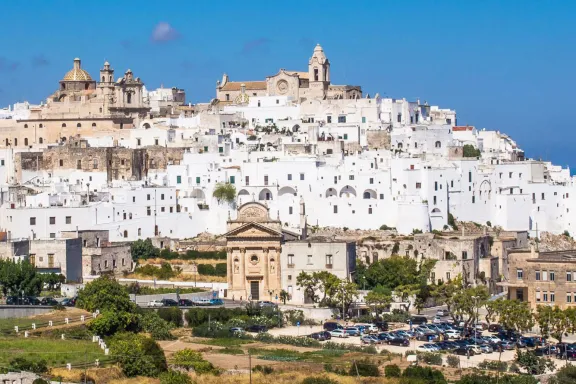



 Dal punto di vista gastronomico, oltre ai classici prodotti liguri, ogni “terra” ha le sue specialità culinarie, come il pesto, la salsa di noci le focacce e naturalmente il pesce, dalle frittelle di baccalà, ai gianchetti in pastella di Vernazza, alle cozze ripiene e cotte in casseruola con il sugo, fino alla celebri acciughine di Monterosso che, seguendo una tradizione secolare, vengono pescate con una rete da circuizione e una lucerna, quindi lavorate a mano entro due o tre giorni, accuratamente stratificate in vasetti, pressate e ricoperte di salamoia, rendendole tenere e saporite e permettendo una perfetta conservazione.
Dal punto di vista gastronomico, oltre ai classici prodotti liguri, ogni “terra” ha le sue specialità culinarie, come il pesto, la salsa di noci le focacce e naturalmente il pesce, dalle frittelle di baccalà, ai gianchetti in pastella di Vernazza, alle cozze ripiene e cotte in casseruola con il sugo, fino alla celebri acciughine di Monterosso che, seguendo una tradizione secolare, vengono pescate con una rete da circuizione e una lucerna, quindi lavorate a mano entro due o tre giorni, accuratamente stratificate in vasetti, pressate e ricoperte di salamoia, rendendole tenere e saporite e permettendo una perfetta conservazione.

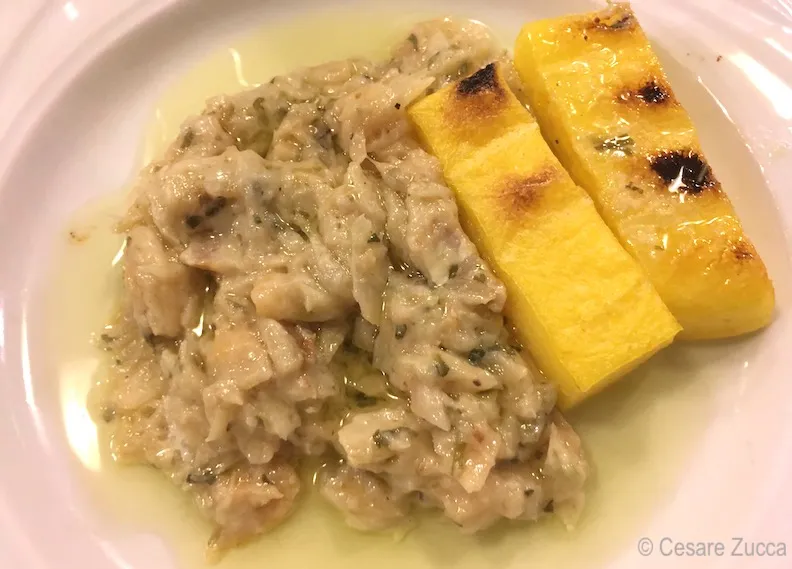


 La gastronomia “spezzina”, ricca di sapori, profumi e piatti genuini, è la viva testimonianza della vita marinara e contadina. Una cucina schietta, basata su ingredienti poveri sapientemente mischiati tra di loro: crostacei, verdure ed erbe spontanee.
La gastronomia “spezzina”, ricca di sapori, profumi e piatti genuini, è la viva testimonianza della vita marinara e contadina. Una cucina schietta, basata su ingredienti poveri sapientemente mischiati tra di loro: crostacei, verdure ed erbe spontanee.


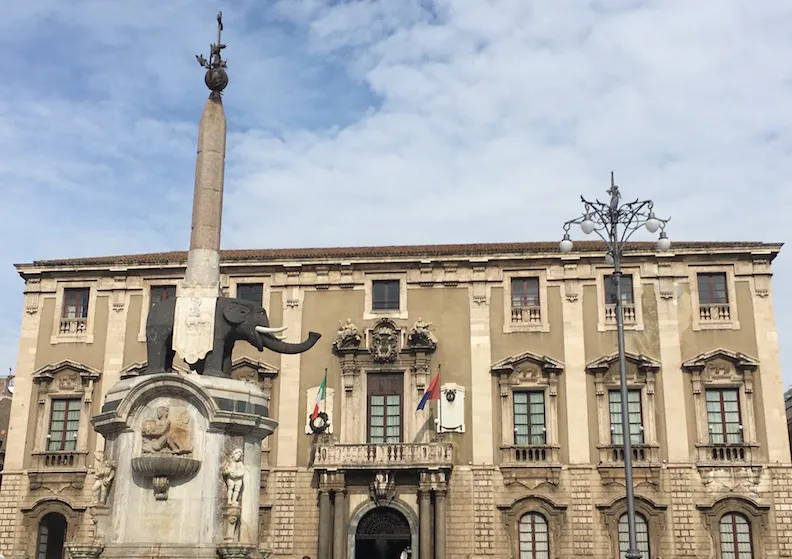
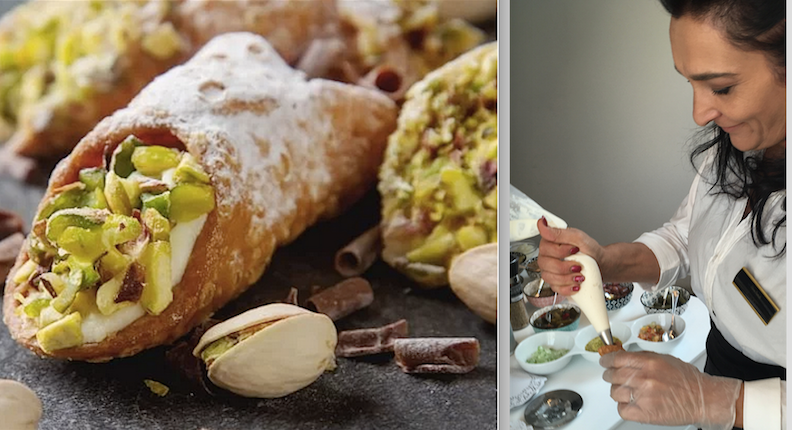


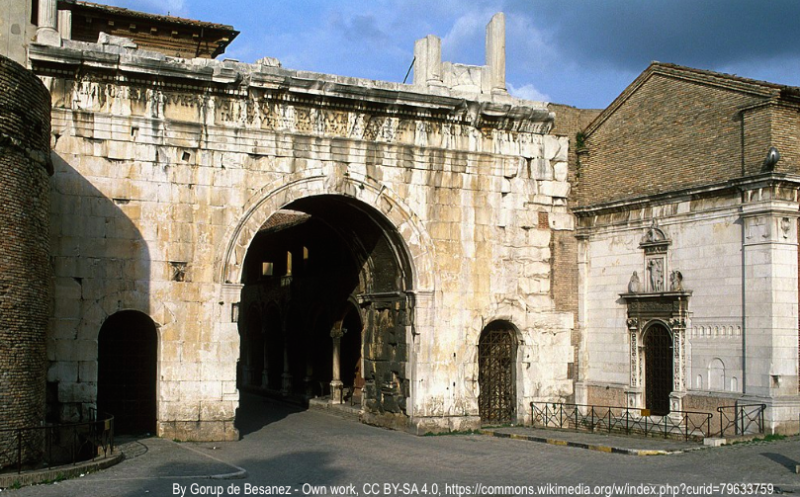
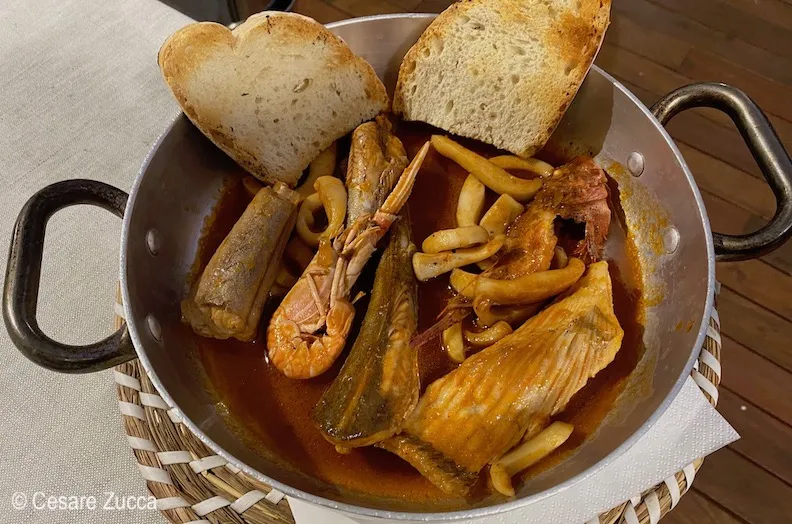
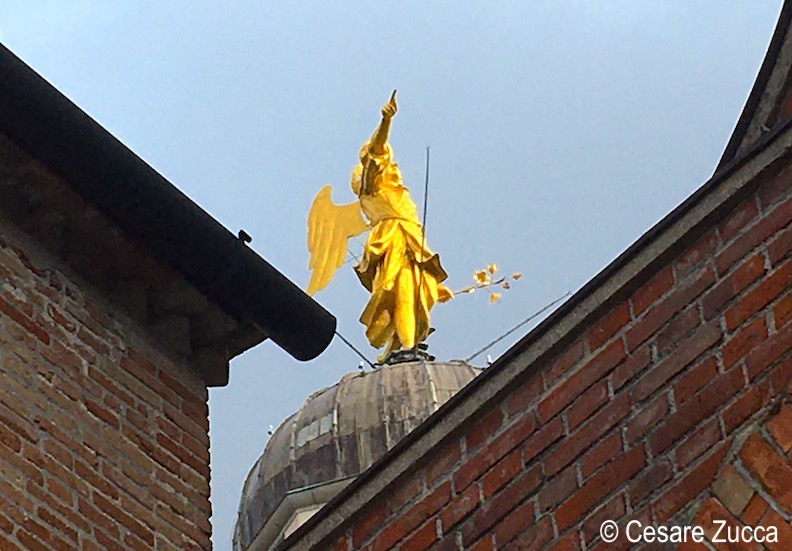 Gusterete il frico, succulenta frittella salata a base di formaggio Montasio, patate, cipolle, spesso arricchito con pancetta o funghi e rigorosamente accompagnato da una fumante polenta e un buon calice di vino, o per dirla alla friulana… un buon tajut.
Gusterete il frico, succulenta frittella salata a base di formaggio Montasio, patate, cipolle, spesso arricchito con pancetta o funghi e rigorosamente accompagnato da una fumante polenta e un buon calice di vino, o per dirla alla friulana… un buon tajut.
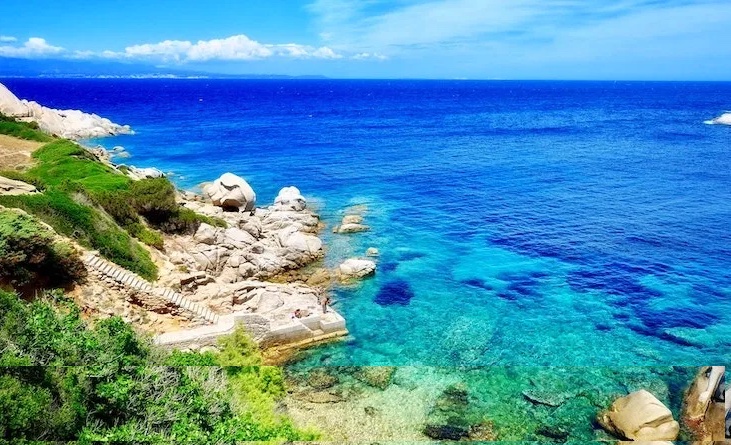

 La cucina tipica abruzzese fonda le sue radici nella gastronomia contadina. I piatti tradizionali abruzzesi sono molto semplici e fatti di sapori autentici principalmente di terra. La carne di pecora, dalla tradizione dei pascoli abruzzesi, riveste un ruolo importante come nel piatto abruzzese per eccellenza: gli arrosticini. tradizionali spiedini di carne di pecora
La cucina tipica abruzzese fonda le sue radici nella gastronomia contadina. I piatti tradizionali abruzzesi sono molto semplici e fatti di sapori autentici principalmente di terra. La carne di pecora, dalla tradizione dei pascoli abruzzesi, riveste un ruolo importante come nel piatto abruzzese per eccellenza: gli arrosticini. tradizionali spiedini di carne di pecora





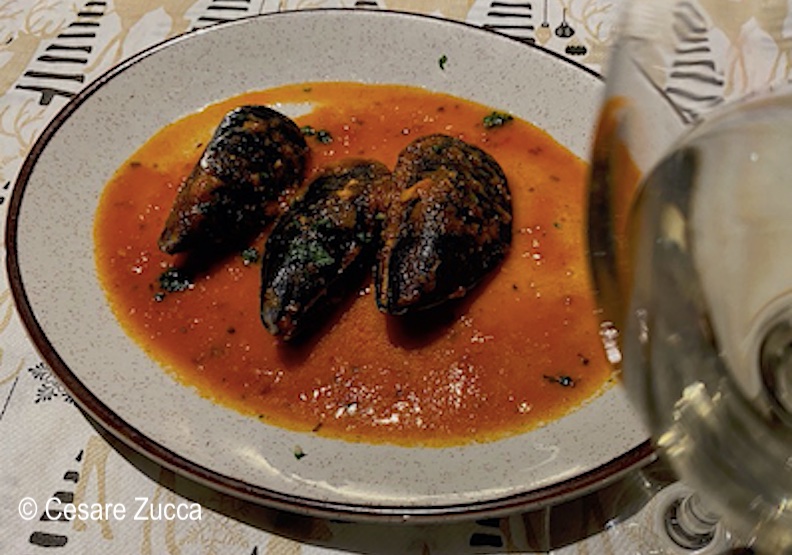










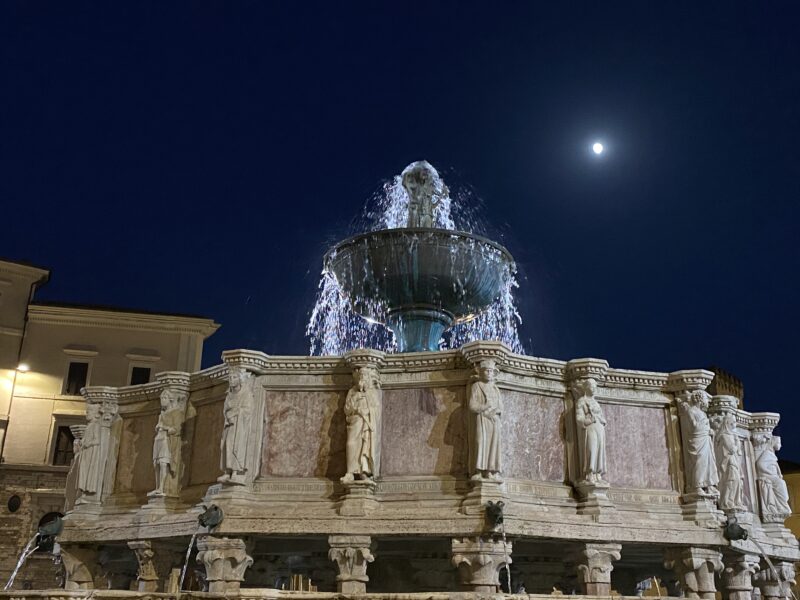




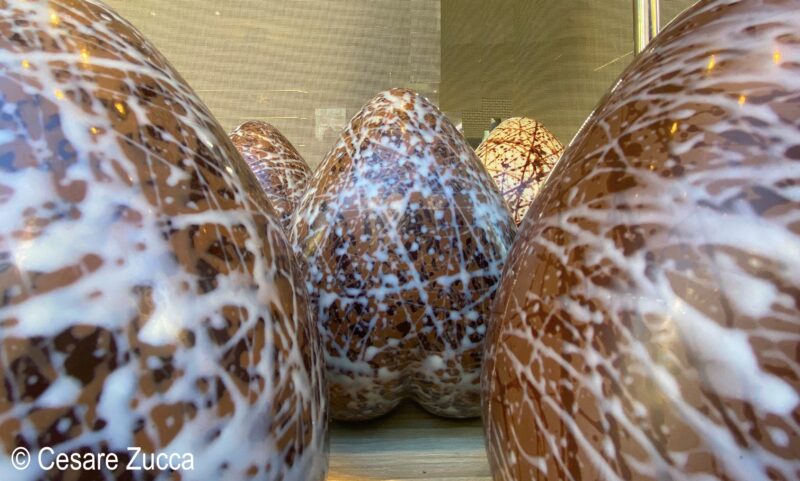

 In vetrina ho voluto l’Uovo Kactus (con la K….)
In vetrina ho voluto l’Uovo Kactus (con la K….)




